The 100 Greatest Looney Tunes Characters

From the slow-witted Elmer Fudd to that wascally wabbit Bugs Bunny, and from the monstrous Gossamer to the adorable Tweety Bird, the Looney Tunes franchise contains one of the most extensive catalogs of comedic characters in pop-culture history.
Warner Bros. created over 1,000 cartoons under the Looney Tunes and Merrie Melodies banners from 1929 until the original studio shut down in 1969. But that couldn’t kill the creativity. While the big-screen theatrical shorts became a thing of the past, the characters that inhabited them would find their way into feature-length films like the Space Jam movies and Looney Tunes: Back in Action. They’d also make an indelible mark on television with reruns of the theatrical shorts and original programming like Duck Dodgers, The Sylvester & Tweety Mysteries and countless others. More recently, they’ve invaded streaming services with the 2020 Max series Looney Tunes Cartoons.
Click right here to get the best of Cracked sent to your inbox.
All of which is to say, over the last century, literally hundreds of Looney Tunes characters have been introduced and, to determine the 100 greatest, we have assembled a murderers’ row of Looney Tunes experts, including:
- Dave Alvarez, artist on a wide variety of Looney Tunes projects, including the Looney Tunes comic books, Space Jam: A New Legacy and several Looney Tunes TV shows
- Jerry Beck, an animation historian and author of The 100 Greatest Looney Tunes Cartoons, The 50 Greatest Cartoons: As Selected by 1,000 Animation Professionals and Looney Tunes and Merrie Melodies: A Complete Illustrated Guide to the Warner Bros. Cartoons
- Bob Bergen, a voice actor of Looney Tunes characters like Porky Pig, Tweety Bird and others since 1990
- Jeff Bergman, a voice actor who has played Bugs, Daffy and many other Looney Tunes characters since 1989
- Ruth Clampett, daughter of Looney Tunes director Bob Clampett, former Warner Bros. Gallery art director and author of the forthcoming book Welcome to Wackyland: The Wonderful World of Bob Clampett
- Andrew Farago, the curator of the Cartoon Art Museum in San Francisco and author of The Looney Tunes Treasury
- Jonathan Graves, Looney Tunes superfan and host of This Means Podcast
- Robert McKimson Jr., the son of Looney Tunes director Robert McKimson, nephew of animators Tom McKimson and Charles McKimson and author of “I Say, I Say... Son!”: A Tribute to Legendary Animators Bob, Chuck and Tom McKimson
- Tom Ruegger, the creator of Tiny Toon Adventures and Animaniacs, among other Looney Tunes-inspired shows
- Trevor Thompson, another Looney Tunes superfan and The Looney Tunes Critic on YouTube
They based their selections on three things: 1) cultural impact; 2) historical importance; and 3) just plain funny. While the list is heavily weighted in favor of characters from the original Looney Tunes era 1929-1969, modern characters were also considered, with a couple making the cut. (Note: Tiny Toons characters were determined to be their own thing, as per Ruegger, and are not represented here.)
So, without further ado *ahem*: Overture, curtain, lights, this is it, we’ll hit the heights, and oh what heights we’ll hit, on with the list, this is it!
Cool Cat
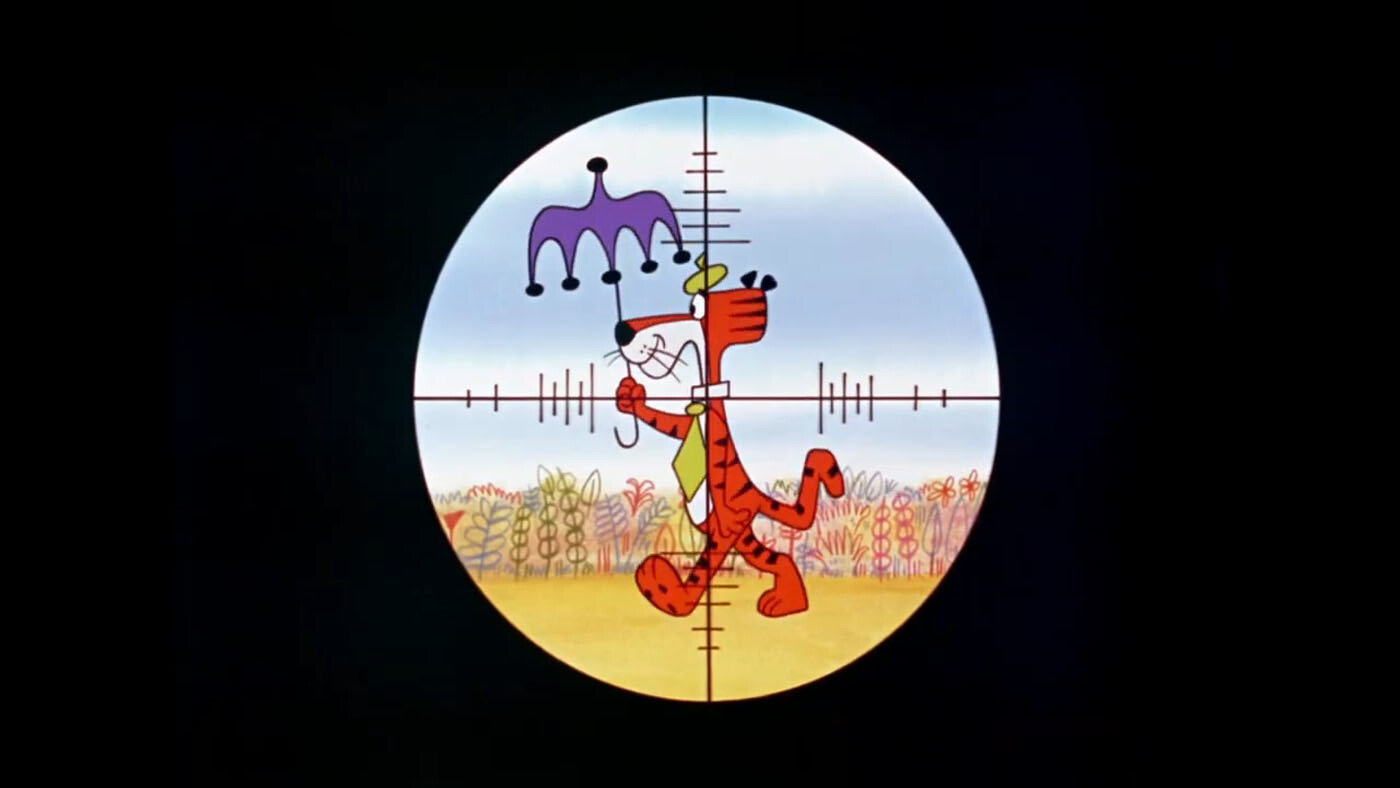
“Cool Cat should be number 100,” argues Beck of the Pink Panther-inspired character. “People don’t like him because, like many theatrical cartoons from the 1960s, the animation is pretty poor. Yet, Cool Cat is important because he stars in the last theatrical cartoon made during the golden age. I don’t hate Cool Cat personally, but how disappointed would someone be if I said, ‘I’m putting on a Looney Tunes cartoon,’ and it ended up starring Cool Cat?”
Buddy

“Buddy is pretty boring,” says Ruegger about the child character featured in black-and-white cartoons from 1933 to 1935. Bosko — a Mickey Mouse rip-off who places notably higher on this list — was the first star of the Looney Tunes shorts but could no longer be used after his creators left the studio. Buddy, a cutesy, chipper little boy, was his replacement. But, as Beck describes him, “Buddy was a nonentity.” Thankfully, Porky Pig came along in 1935, Looney Tunes finally found its voice, and Buddy was whisked off to the ash heap of history. He returned as a villain in Animaniacs, which was far funnier and more entertaining than anything in the classic Buddy catalog.
Foxy

Over time, the difference between the cartoons labeled Looney Tunes and Merrie Melodies would become increasingly irrelevant. Still, there was a difference in the early 1930s, with Looney Tunes focusing more on the stories and Merrie Melodies focusing more on the music. While Bosko starred in the first Looney Tunes short in 1929, The first Merrie Melodies short in 1931 starred Foxy, the most blatant of many blatant Mickey Mouse clones from studios trying to compete with Disney. Foxy starred in three cartoons before getting the boot.
Beans
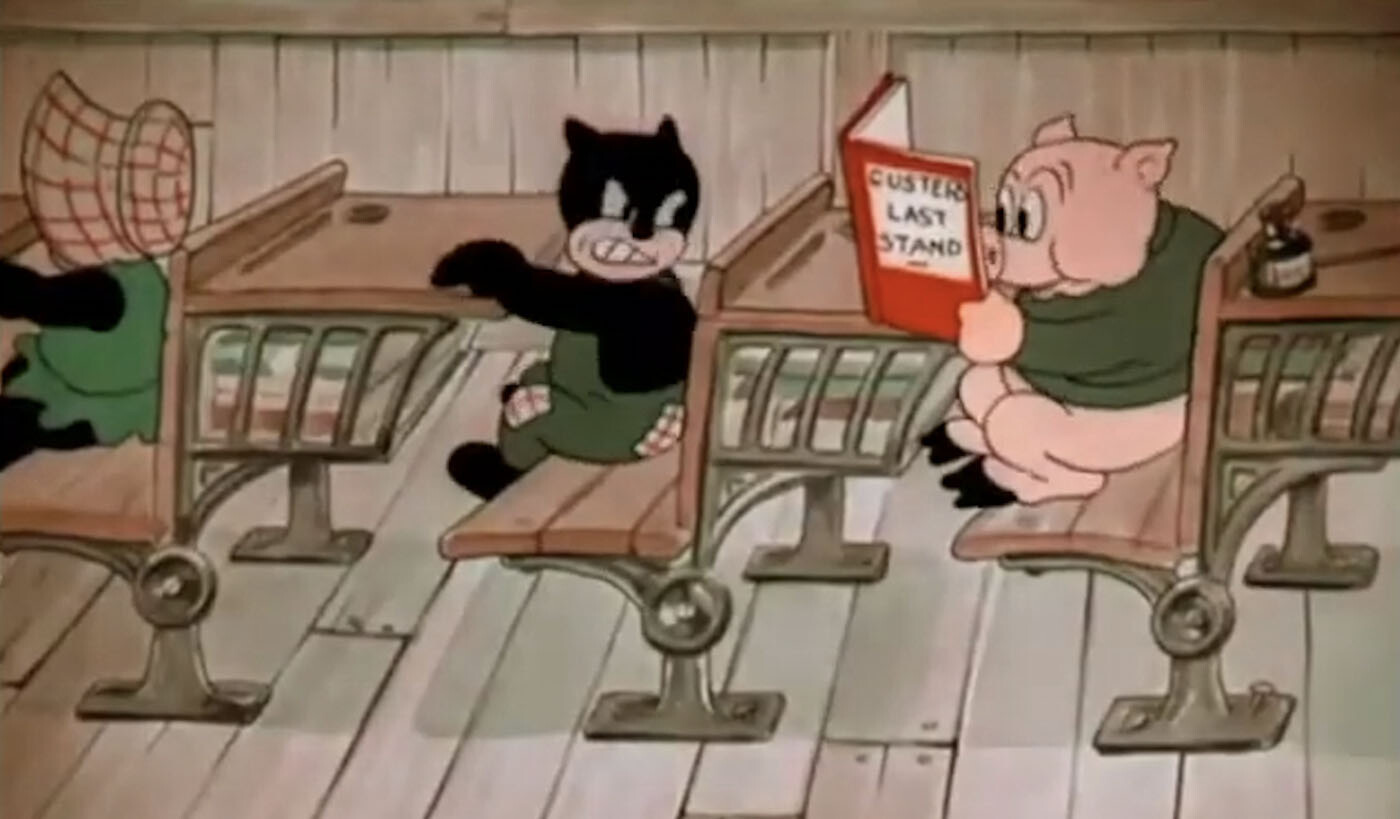
Beans was a cat who debuted alongside Porky Pig. According to Beck, “Beans might be too obscure to include, except for the fact that he was a star character for Looney Tunes for a moment. He even did the ‘That’s All Folks’ at the end. He was the star of three or four cartoons before Porky stole the show.”
Crackpot Quail
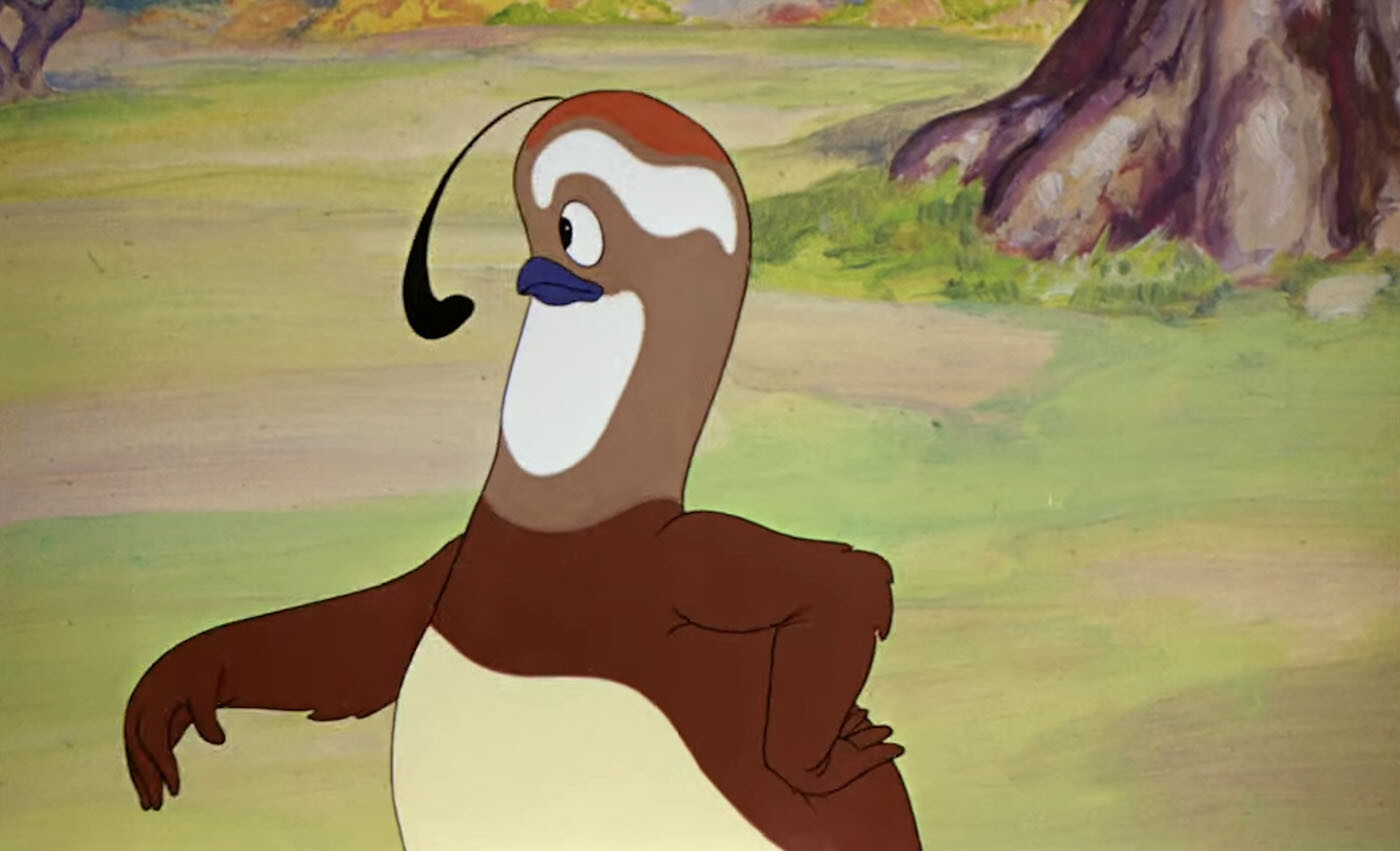
“This character was in the limelight before Bugs Bunny, and it got taken away from him,” explains Graves of the one-time character who is exactly like Bugs Bunny, with the exception of him being a quail.
Gabby Goat

Created by Ub Iwerks, the same man who designed Mickey Mouse, Gabby Goat was a foil to Porky Pig post-Beans but pre-Daffy Duck. As Farago tells me, “Gabby Goat is one of those prototype characters. They figured out that Porky Pig needed somebody more aggressive to play off of, and Gabby Goat was that before Daffy Duck was.”
Conrad the Cat

Conrad the Cat starred in a trio of shorts in 1942, but, as Thompson notes, “He didn’t have any defining characteristics.” As such, he barely makes it onto this list.
Slowpoke Rodriguez

While Alvarez professes a personal affection for Slowpoke Rodriguez, the sleepy mouse who is pals with Speedy Gonzales has a bit of a troubled history. As Thompson explains, “In later cartoons, Slowpoke is made into a real character who has agency, but he is based on a racial stereotype. It’s not just that he’s the slow mouse to Speedy Gonzales’ fast mouse. He is absolutely based on a stereotype.”
Ala Bahma

Thompson calls Bugs Bunny’s magician foil a bit “milquetoast,” but the vaguely Middle-Eastern Ala Bahma does squeak his way onto the list for being a somewhat memorable villain for the rabbit.
The Monstars

“There are huge fans of the Monstars out there, and they came out in droves when the new Space Jam was released asking, ‘Where are the Monstars?’” recalls Bergman. Although the opposing team in the first Space Jam may not be considered “classic” characters by some purists, the original film hits a nostalgia button for many ’90s kids. Along with Lola Bunny, who deserves her much higher place on this list, the Monstars represent Space Jam and its reinvigoration of the Looney Tunes franchise.
Private Snafu

Private Snafu was a character developed by Warner Bros. and director Frank Capra to use in World War II instructional videos for soldiers. The shorts — some of which were written by Dr. Seuss — mostly told soldiers what not to do by way of the charming, accident-prone idiot Private Snafu. These shorts were never shown to mainstream audiences, but they became notorious after a few were included on the Looney Tunes Golden Collection DVD sets, where Snafu “gained some popularity, in a post-modern ironic sense,” says Thompson. Offering a bit of trivia on the character, Clampett adds, “My dad did one of these shorts and, if you freeze-frame it, there’s a lot of naked women in there.”
Instant Martians
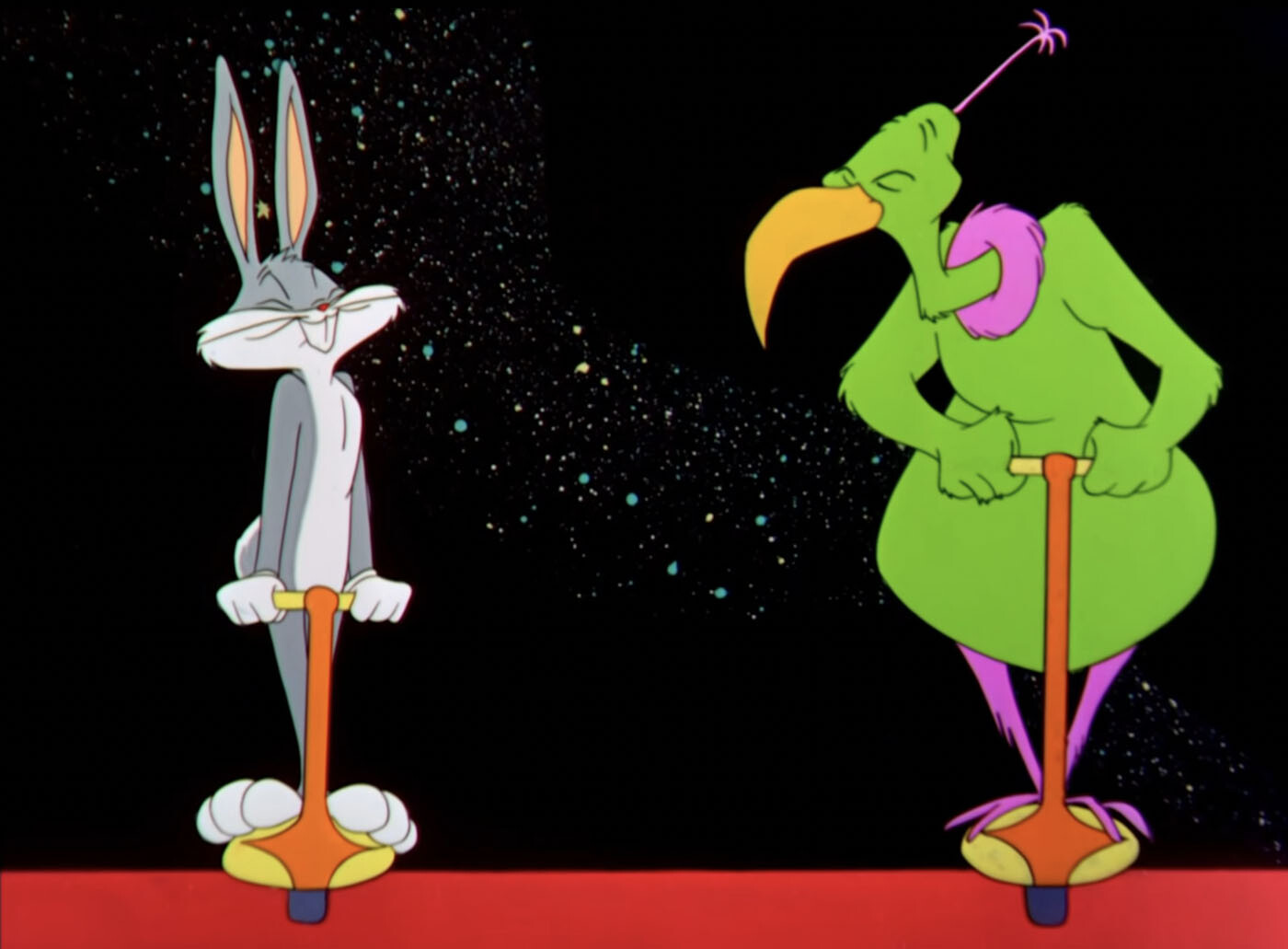
“The Instant Martians are barely characters. They’re just minions,” notes Graves. But despite a lack of character development for Marvin the Martian’s just-add-water goons, they are very distinct in their design, making them a memorable part of a few classic cartoons and the 2003 Duck Dodgers series.
Honey Bunny
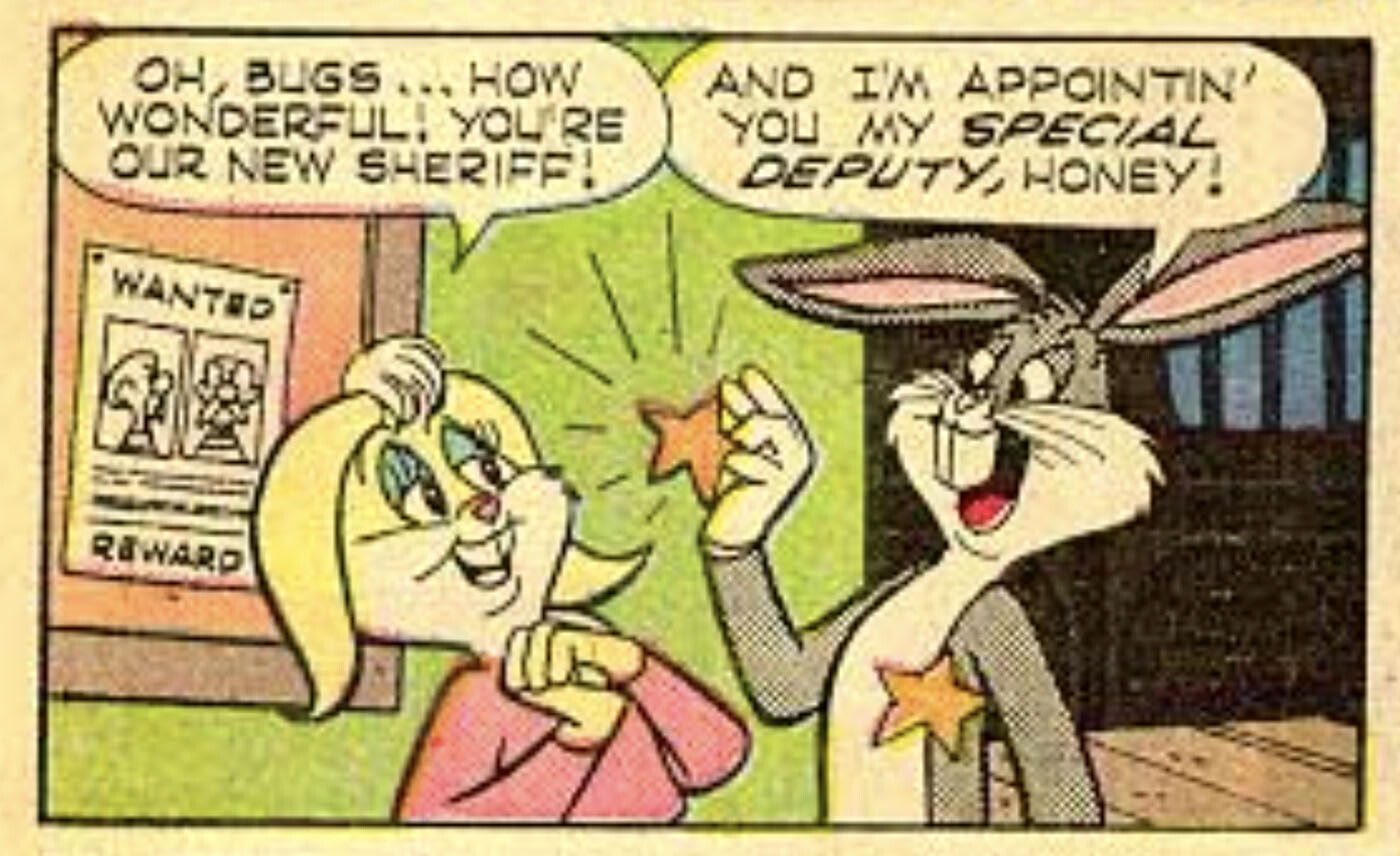
“The Looney Tunes and their relationship with female characters is so odd,” notes Farago. In the classic cartoons, the only truly substantial female character was Granny and maybe Witch Hazel (though the latter only appeared in four classic shorts). A prime example of Looney Tunes’ lack of female representation is Honey Bunny, a romantic interest for Bugs who really only popped up in marketing materials and comic books.
The Tasmanian She-Devil
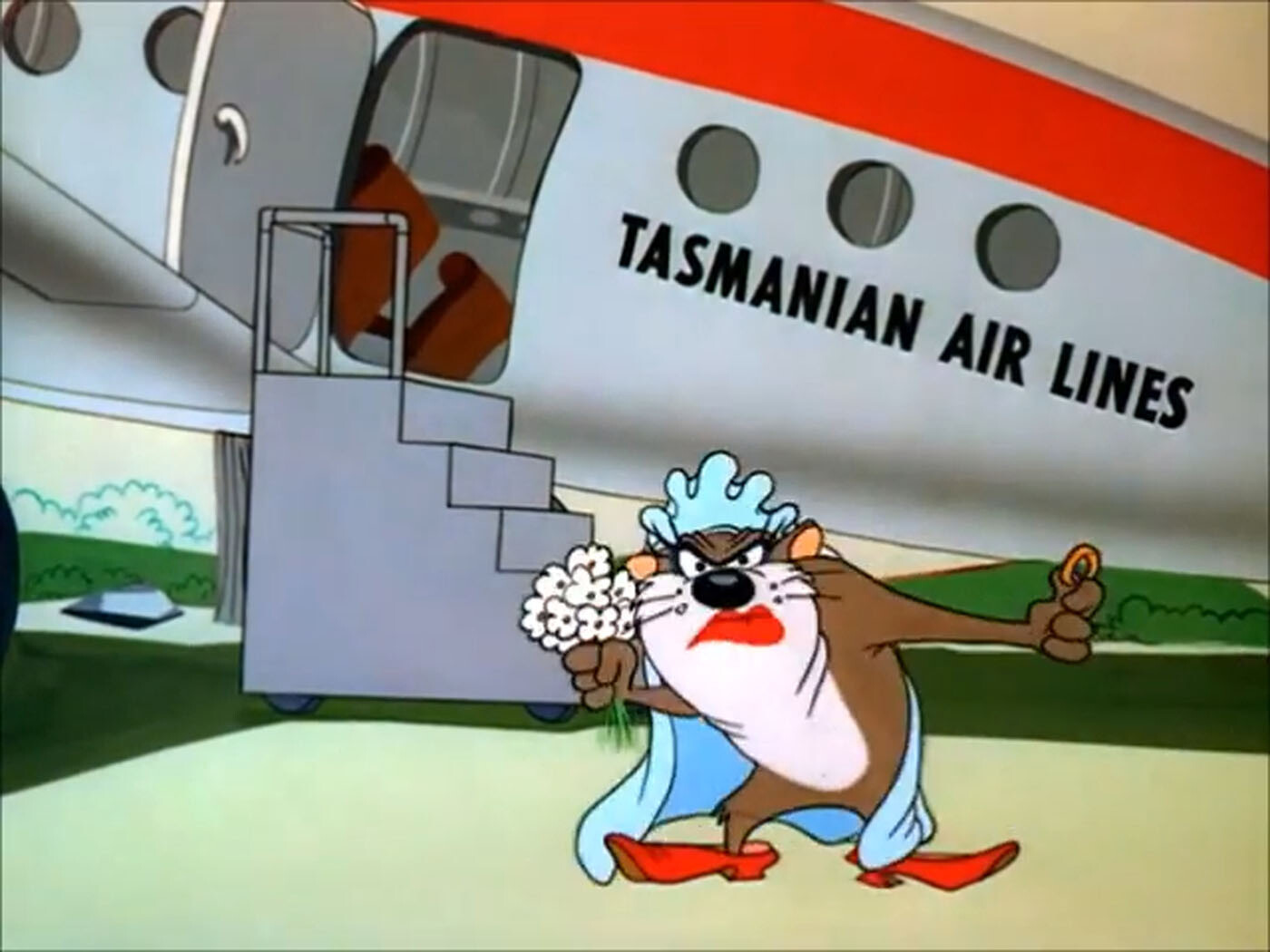
“The Tasmanian She-Devil is very popular among fans of Taz,” says Graves. She appeared in just two classic shorts and the film Looney Tunes: Back in Action, but even if they just slapped a bow on Taz, she’s memorable and is featured on a sizable amount of Looney Tunes merchandise.
Babyface Finster
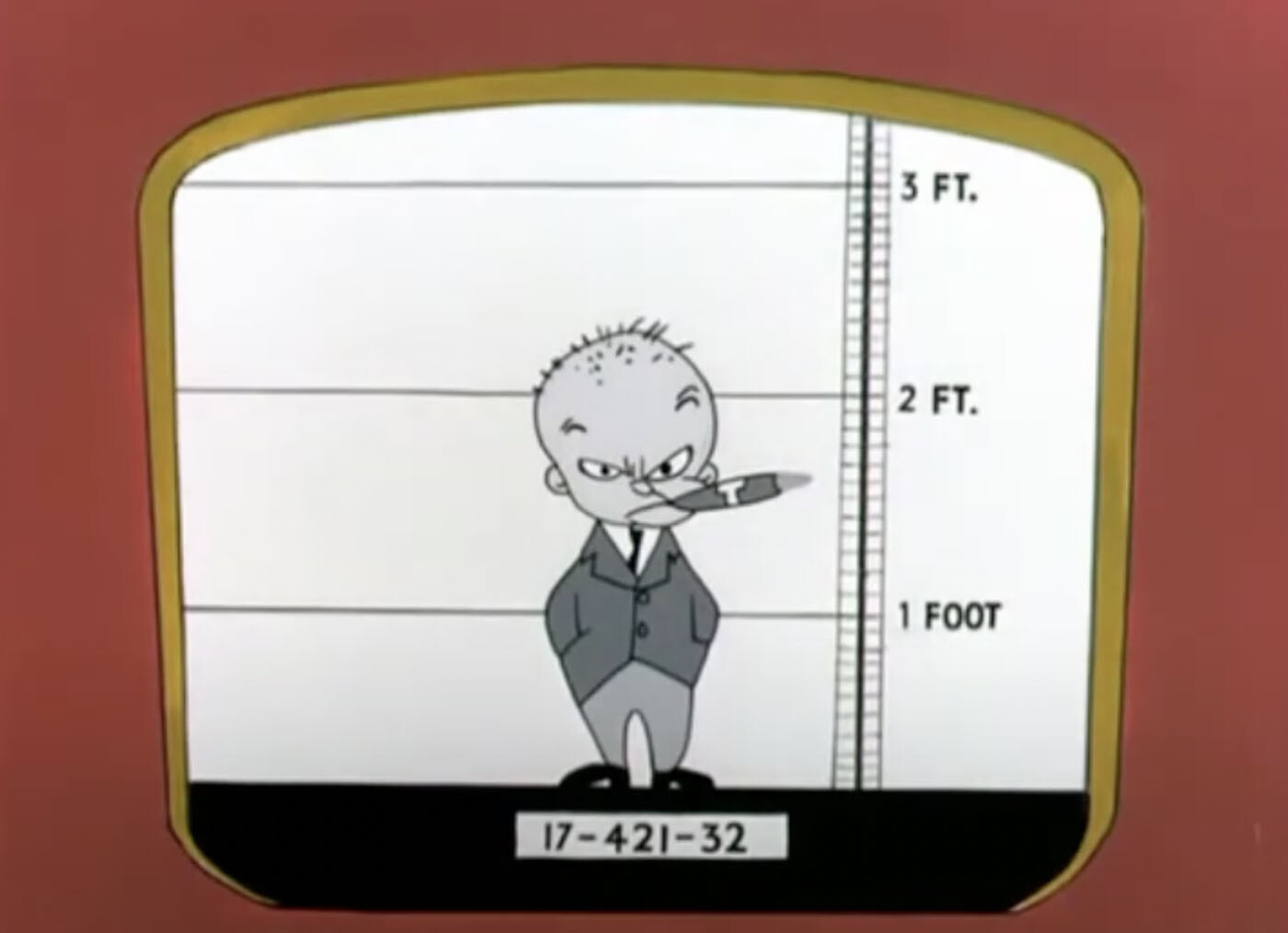
“Babyface Finster was obnoxious and funny,” says Ruegger of the gangster villain who Bugs Bunny mistakes for a baby.
Shropshire Slasher

“Deduce, You Say is a beloved cartoon,” says Thompson of the Sherlock Holmes-inspired Daffy Duck cartoon. Less memorable than other hulking villains like the Crusher and Nasty Canasta, the Shropshire Slasher is still notable for his downright scary design and hilarious name.
Blacque Jacque Shellacque

“Like the Shropshire Slasher, Blacque Jacque Shellacque is a character with a great name and a great introduction,” Farago says of the French Canadian rival of Bugs Bunny. “Both of them are only one-note characters, so they don’t deserve to be any higher than this, but they are memorable villains.”
Leo the Lion

“Chuck Jones once wrote, ‘Inconsistency is the handmaiden of artistry,’ and this character is nothing if not inconsistent,” says Thompson of the lion who had shifting characterizations and voice actors. Still, he’s a part of some memorable cartoons like 1942’s Hold the Lion, Please.
Angus MacRory
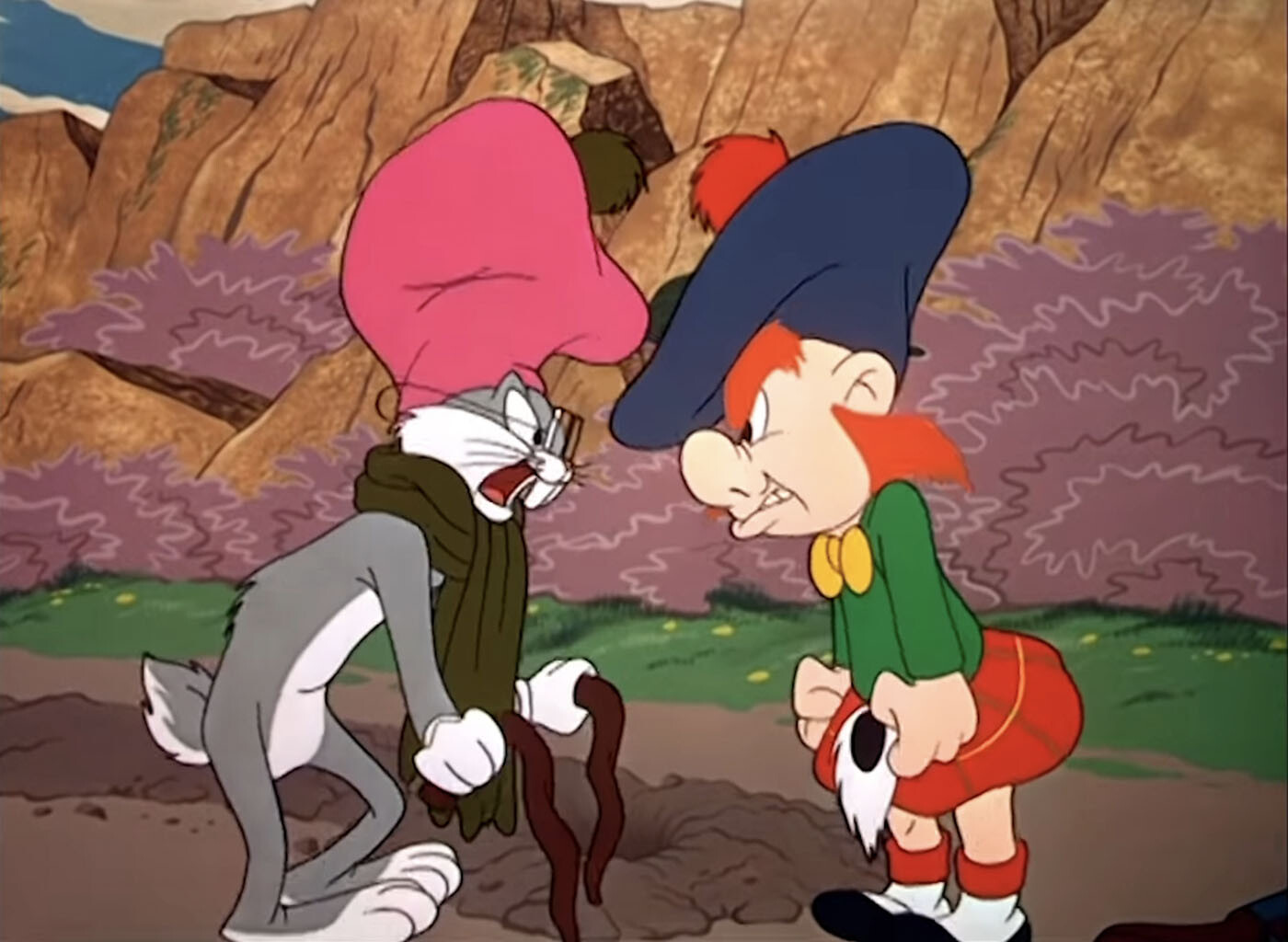
Clampett cites Angus MacRory’s unique design for his inclusion on this list. He was only in one cartoon, but it was memorable to see Bugs Bunny square off against a villain in a game of golf as opposed to his more regular backdrops.
Nelly the Giraffe

“Nelly’s Folly is noteworthy because it is one of the more adult-themed cartoons played on The Bugs Bunny Show, which was originally a primetime show,” notes Thompson. Though just a one-time character, Nelly the Giraffe was a flirtatious female who definitely should have had more appearances.
Count Bloodcount

“I love Count Bloodcount! He’s a great character,” Bergen says in regards to the vampire villain of the 1963 short Transylvania 6-5000. Thompson notes that Count Bloodcount’s placement here is helped along by some modern appearances too, including “an episode of Tiny Toon Adventures, where Elmyra gets a pet bat that turns out to be Count Bloodcount.”
Merlin the Magic Mouse

Along with Cool Cat, Merlin the Magic Mouse was a character in those final Looney Tunes shorts of the late 1960s. While he shares some of the same cheap-looking animation as Cool Cat, his jokes age a bit better as a mouse who is a very poor magician. Graves notes that both Merlin and Cool Cat were just in the new Tiny Toons reboot, which might lead to renewed interest in this oft-forgotten era of Looney Tunes.
Dr. Lorre

“It’s amazing how often Peter Lorre showed up in Looney Tunes,” says Farago of the legendary actor who starred in films like The Maltese Falcon. Looney Tunes frequently caricatured celebs like Humphrey Bogart and Groucho Marx, but Lorre was in so many that he eventually became an original character, Dr. Lorre, who appeared in two classic Looney Tunes shorts as well as several Looney Tunes comics, Looney Tunes: Back in Action and Tiny Toon Adventures.
Cottontail Smith

Cottontail Smith is the gun-toting Texan villain in 1943’s super popular Superman parody Super-Rabbit. Graves notes that the character also turns up in Looney Tunes: Back in Action.
The Draft Horse

“The Draft Horse was an important cartoon to Chuck Jones,” says Thompson. “It was the first time he was in a theater watching his cartoons, and he heard laughter. After that, he embraced being more funny over being sentimental.” The 1942 short is indeed funny and very much of the period, centered around a horse who wants to enlist to fight in World War II.
The Little Man from the Draft Board
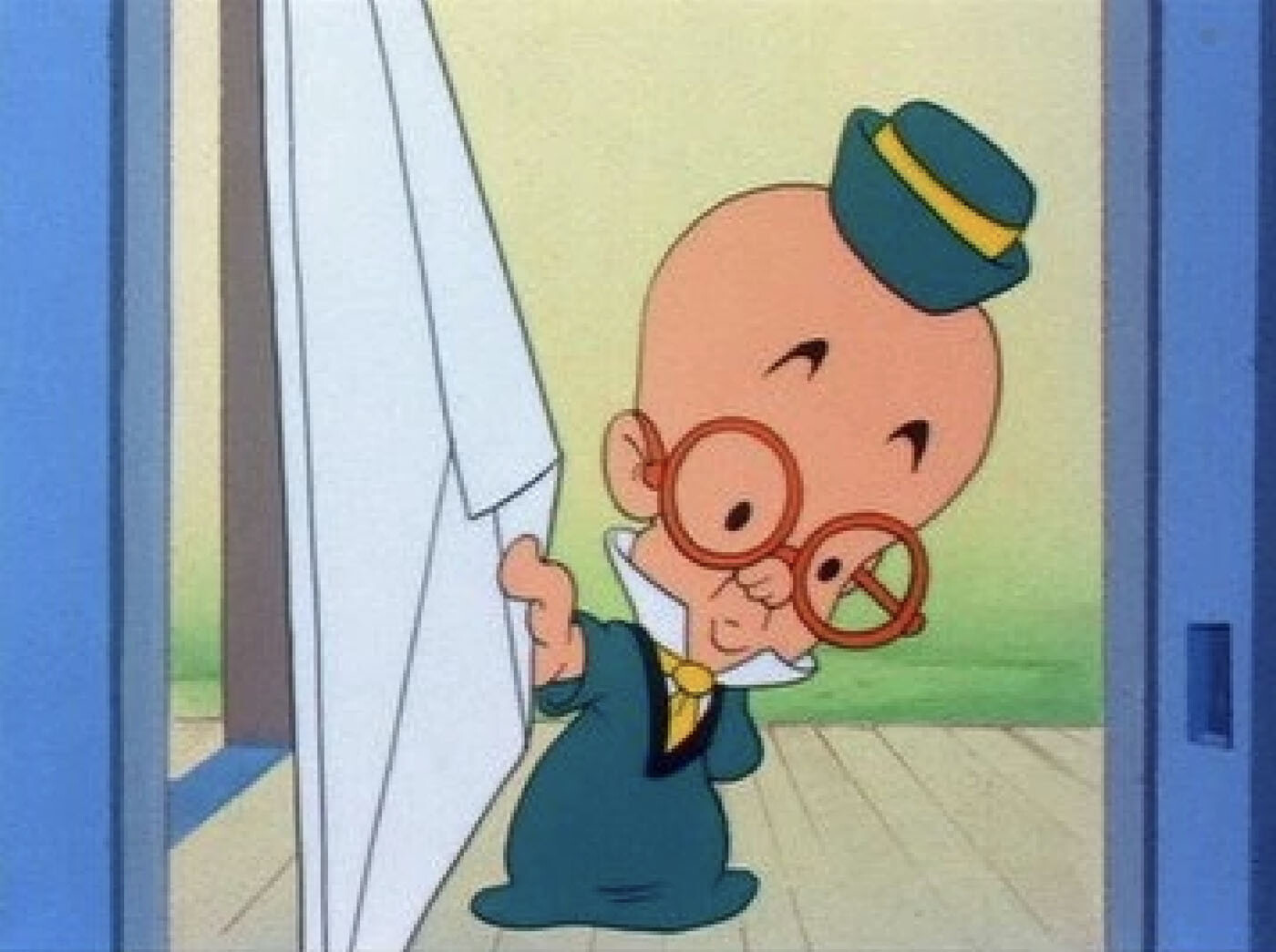
While The Draft Horse was about a horse wanting to fight for his country, the 1945 cartoon Draftee Daffy is the exact opposite. The entire cartoon is about “The Little Man from the Draft Board,” trying to serve Daffy his draft notice and Daffy doing everything he can to avoid it. With this character, “Clampett wanted to show how un-aggressively unrelenting the government would be about drafting people,” says Thompson.
The Gambling Bug
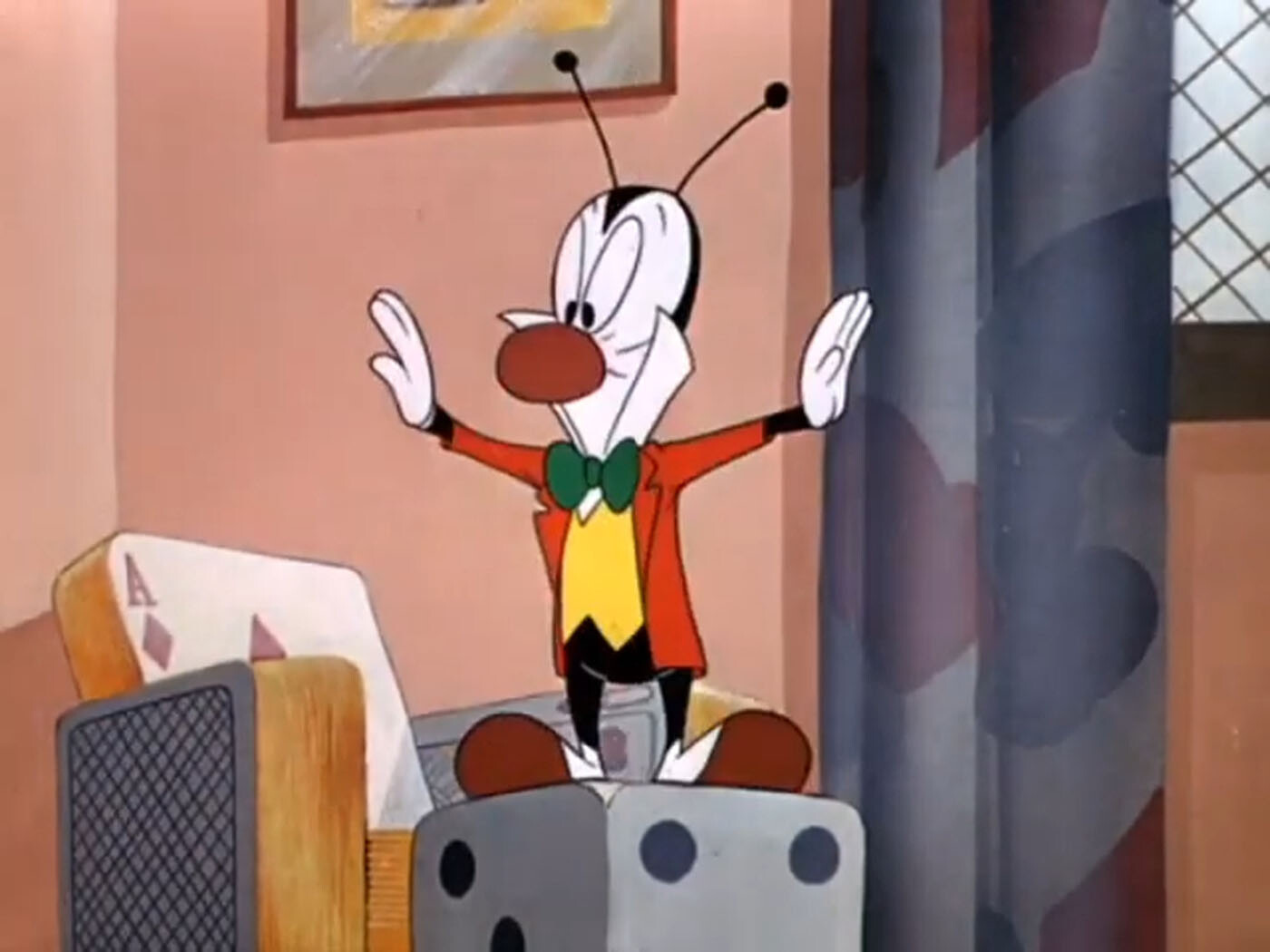
“The Gambling Bug is worthy of inclusion,” says McKimson, whose father created the character. The Gambling Bug is a well-dressed, distinctly designed character who, with his bite, infects people with gambling fever.
Rhode Island Red

“Rhode Island Red really made a big impression when he showed up in Raw! Raw! Rooster! with his fur coat and ukulele,” says Farago. “He’s a bit tricky because Foghorn Leghorn is a character of supreme confidence, and having another character like Rhode Island Red go above and beyond that was interesting to see. I don’t know that it would have worked for more than one cartoon, but that one is memorable.”
Cicero Pig/Pinky Pig

Cicero Pig, named “Pinky” in two golden era Looney Tunes shorts, is Porky’s mischievous nephew and a prominent character in the Looney Tunes comic books. He also recently made his way to the 2020 Max series Looney Tunes Cartoons. “I voiced Cicero in the Max cartoons,” says Bergen. “He was quite a bit more of an asshole there. You really wanted to spank the shit outta that son of a bitch. He was sadistic, and I loved every minute of it.”
The Gas-House Gorillas

“Baseball Bugs is a fun short,” says Farago. One of Bugs Bunny’s most famous cartoons sees him going head-to-head with the Gas-House Gorillas, a baseball team composed of hulking idiots.
The Honey-Mousers
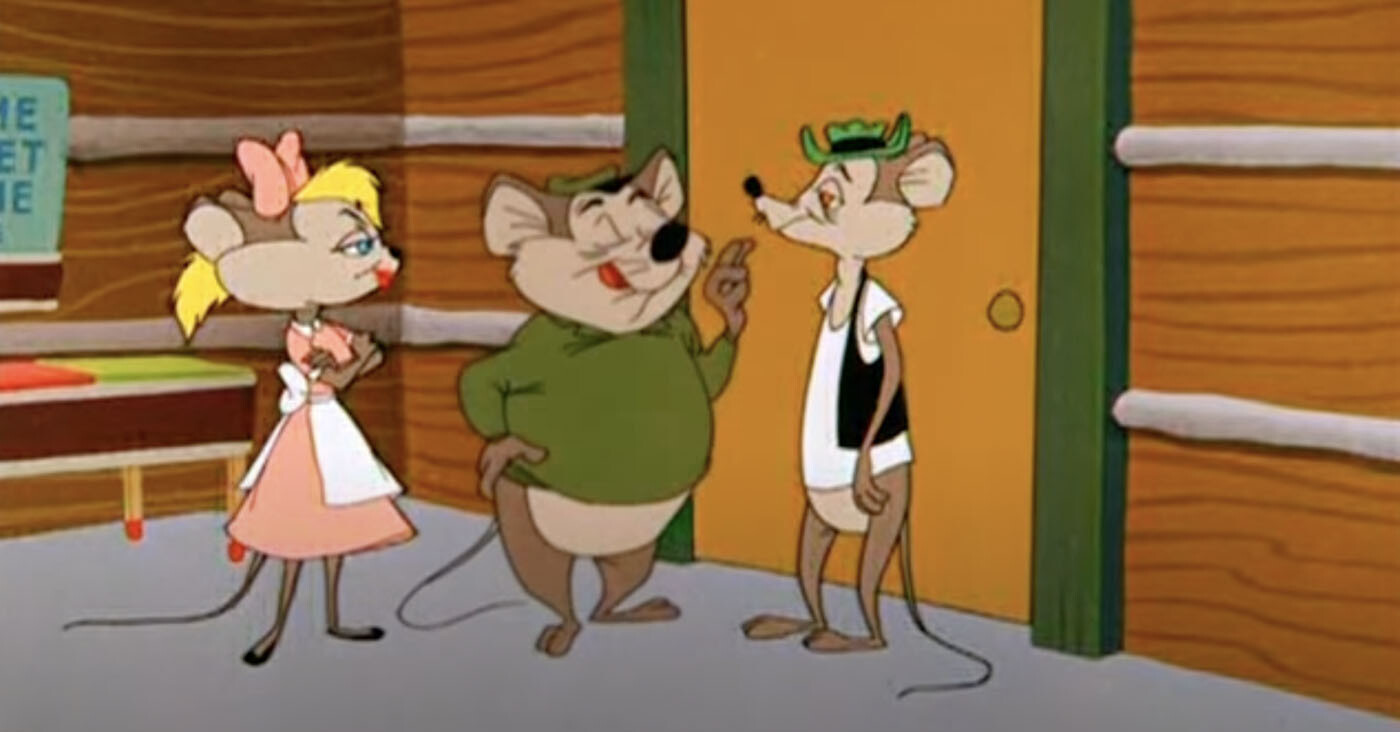
“I love the Honey-Mousers,” Bergen says of the Looney Tunes three-episode parody of The Honeymooners. “Those cartoons were some of the few Looney Tunes shorts Mel Blanc didn’t do. That was Daws Butler doing both Ed Norton and Ralph Kramden from The Honeymooners.”
Clarence Cat

The 1957 short Birds Anonymous sees Sylvester trying to give up his hunger for birds. His sponsor is Clarence, a sleepy-eyed, well-spoken cat. Clarence was only in this one classic-era cartoon, but Thompson explains that “Birds Anonymous is one of the five Oscar-winning shorts, and since Clarence plays a major role in that, he’s on the list.”
The Big Bad Wolf

“The Big Bad Wolf is in a lot of cartoons,” notes Thompson. Two of the most notable are Little Red Riding Rabbit, where he tangles with Bugs and an obnoxious Little Red Riding Hood, and Three Little Bops, where the Big Bad Wolf is reimagined as a lame but eager trumpet player.
K-9

Marvin the Martian’s popularity has also rubbed off on his good-natured, green-furred pup, earning him a place here.
Penelope Pussycat

Penelope Pussycat was Pepé Le Pew’s, uh, “love interest” in his various shorts. We’ll get to the problematic nature of Pepé a little later, but in the meantime, Penelope earns a spot here since she’s in several cartoons and also because, as Beck notes, “There’s a cult around Penelope because furries really like her. Due to the popular demand of the furries, we’re putting Penelope higher on this list than we normally would,” Beck jokes.
Hugo the Abominable Snowman

“He was only ever in one cartoon, but he was very iconic,” notes Thompson. Like many Of Mice and Men parodies in Looney Tunes, Hugo, the dim-witted abominable snowman, was based on Lennie from John Steinbeck’s lauded novella. Which brings us to…
Willoughby

Another Lennie send-up is Willoughby, the dog from a trio of Bugs shorts in the early 1940s. He slightly outranks Hugo because he has one more appearance.
Giovanni Jones

Although not a top-tier Bugs villain like Yosemite Sam and Elmer Fudd, or even a mid-level one like the Crusher and Nasty Canasta, the opera singer Giovanni Jones made an impression nonetheless. “That cartoon, Long-Haired Hare, is well-loved,” explains Thompson.
Little Red Riding Hood

“Bea Benaderet was so memorable as the voice of Little Red Riding Hood,” says Bergman. Farago agrees: “Little Red Riding Rabbit is one of my favorite Bugs Bunny shorts, and I wrote about it for The 100 Greatest Looney Tunes Cartoons book. Bea Benaderet does this perfect, brash, in-your-face twist on Little Red Riding Hood. It was such a stand-out performance.”
Hubie and Bertie

“Hubie and Bertie are a love-them-or-hate-them duo,” says Farago. “I enjoy them, but I know a lot of people wouldn’t want to spend two minutes with them, much less an entire seven-minute cartoon.” Regardless, the loudmouth mice earn a place here since they were in tons of cartoons and because “they got a shot in the arm from Space Jam, where they became the announcers,” notes Graves.
The Gruesome Gorillas

In the 1948 cartoon Gorilla My Dreams, Bugs Bunny is adopted by a pair of gorillas, and, being a good sport, he decides to play along. To a point. While the mother gorilla is sweet and desperate for a baby, the daddy gorilla — sometimes called Elvis in other cartoons — wants nothing to do with Bugs and tries his best to dispose of his adopted son. Of Bugs’ many adventures, it’s a pretty unique one, earning the gorillas a place here.
Spike the Bulldog and Chester the Terrier

Spike and Chester are a canine duo who starred in just two classic shorts — both directed by Friz Freleng. Spike is a tough gangster bulldog; Chester is an eager terrier who idolizes him. Despite a deficit of classic material, the duo are hilarious and have returned many times since.
The Drunk Stork

“The Drunk Stork is a good story device,” Farago explains. “It’s surprising how often they were able to use this character as a launchpad for stories — Bugs gets delivered to a gorilla family, for example; someone gets the wrong baby is such a great premise.”
The Weasel

“The Weasel is a memorable character, and he’s only in three cartoons,” says Thompson. The character’s stickiness is undoubtedly due to his ravaged design and his erratic movements.
Dr. I.Q. Hi

Dr. I.Q. Hi was a minor character in the short Duck Dodgers in the 24½th Century and was later a regular cast member in Cartoon Network’s 2003 series Duck Dodgers. Duck Dodgers in the 24½th Century was a memorable classic short and, as Bergen recalls, “Duck Dodgers the series was incredibly funny and well written.” Dr. I.Q. Hi’s part in both earns him his place on this list.
Red Hot Ryder

The 1944 short Buckaroo Bugs is notable for two reasons. For one, it’s the only cartoon where Bugs Bunny is cast in a classic villain role, playing the bandit, “The Masked Marauder.” The other notable thing about it is Bugs’ rival, Red Hot Ryder, a parody of the radio character Red Ryder. While he’s very Elmer Fudd-like in personality, Thompson says he serves as something of a precursor to Yosemite Sam as a diminutive Western-themed character.
Toro the Bull

“Toro may have other cartoons, but the only one anyone cares about is Bully for Bugs,” says Thompson. “This cartoon exists because producer Eddie Selzer stood in Chuck Jones’ doorway one day saying, ‘I don’t want any gags about bullfights. Bullfights aren’t funny!’” Out of spite, Jones delivered an absolute classic.
The Crusher

“Crusher was our first exposure to obscene musculature,” Alvarez says of Bugs Bunny’s boxer/wrestler rival. The Crusher was one of Bugs’ best “bruiser” villains.
Nasty Canasta

The best of this trio of bruisers is the Western outlaw Nasty Canasta, who battled both Bugs and Daffy in different shorts. “Bugs was so physically outmatched by characters like Toro, Crusher and Nasty Canasta that Bugs had to go all out to defeat them,” says Farago. “If you don’t find a way to challenge these characters in different ways, it wouldn’t be as fun.”
Bookworm

“The friend of Sniffles from three shorts, the Bookworm is a small green worm with glasses and a shy personality. He later got a larger role in Tiny Toon Adventures thanks to creator Tom Ruegger, who made him the librarian at Acme Looniversity,” explains Graves.
Playboy Penguin

“Playboy Penguin is solidly in the middle of the list because he’s a memorable character,” Beck says of the adorable baby penguin. He starred in two cartoons alongside Bugs, which had Bugs saving him or returning him home. “Kids love those cartoons because Bugs is kind of like a dad in them,” Thompson notes.
Claude Cat

“Claude Cat is an all-purpose character,” notes Thompson. While Sylvester is the most famous feline in the Looney Tunes universe, a cartoon would occasionally call for a cat that didn’t hog the spotlight away from the star (like Hubie and Bertie, for example). More often than not, that cat would be Claude, who appeared in 10 shorts, with a prototype of the character popping up in four shorts before that. Claude’s role as “that other cat” may not have been glamorous, but it was essential.
A. Flea

“That song sung by A. Flea — ‘Food Around the Corner’ — why is that in my head?” Ruegger asks himself about the musical diddy sung by a redneck flea in An Itch in Time. “There are moments from Looney Tunes that stick with us forever,” Ruegger continues. “Even if we didn’t watch a particular cartoon that often, they were just that clever and that meaningful. ‘Food Around the Corner’ is one of those great earworm moments from Looney Tunes where it was in one cartoon, and it’s with you forever.”
Dr. Moron/Dr. Frankenbeans

Dr. Moron, aka Dr. Frankenbeans, is “the go-to Looney Tunes evil scientist,” says Graves. Creator of Gossamer, he tangled with Bugs in the 1952 short Water, Water Every Hare and has been brought back for a wide array of modern Looney Tunes media.
Eggbert/Egghead Jr.

“Egghead Jr. was a great ploy for Foghorn Leghorn to go crazy,” Graves says of the nerdy baby chick. Ruegger also adds, “We used that character in Tiny Toon Adventures almost completely unchanged.”
The Three Little Pigs

The Three Little Pigs had a bunch of different characterizations in Looney Tunes, but the best was the 1957 Friz Freleng cartoon Three Little Bops, which retold the story with the Three Pigs as jazz musicians. “Three Little Bops was very clever and hip at the time,” says Clampett, and it remained a favorite thanks to regular replays on various Looney Tunes syndication blocks.
Ralph Phillips

“Ralph Phillips is this Walter Mitty-type character starring in two shorts. He’s a daydreaming kid we can all relate to. The cartoon is unique because it’s a bit more sentimental. I also think you can draw a line from Ralph Phillips to Calvin and Hobbes,” argues Farago.
Babbit and Catstello

The feline clones of Abbott and Costello starred in three classic Warner Bros. shorts. Surprisingly, one short had them as mice instead of cats; they also had a cameo as dogs once in another. Not only were they funny, but Bergen explains that they also hold some historical significance for Looney Tunes. “Their very first cartoon, A Tale of Two Kitties, was the first one with Tweety Bird, and it’s the only one where Tweety is pink. The Hays Office objected to Tweety being naked, so he was painted yellow after that,” says Bergen, who offers another bit of trivia on A Tale of Two Kitties: “The film this short debuted with was Casablanca.”
Marc Antony and Pussyfoot

“Marc Anthony and Pussyfoot starred in about four cartoons,” says Beck. You may not know the adorable kitten and her protective bulldog pal by name, but they’re a duo you definitely know by sight, thanks to the stark contrast of the pair and the hilarity of their cartoons.
Owl Jolson

In the first episode of South Park, Eric Cartman gets an anal probe from alien visitors. During a scene where he’s protesting that his abduction was only a dream, Cartman is zapped by a laser from space. He then gets rosy cheeks and begins to dance while singing, “I love to singa, about the moon-a, and the June-a, and the spring-a.” This scene’s audio is lifted directly from the 1936 Merrie Melodies short I Love to Singa, about an adorable owl named Owl Jolson who, despite his father’s protests, loves to sing jazz music. The cartoon was a hit in the 1930s and only gained more notoriety and longevity because of the South Park gag.
Sniffles
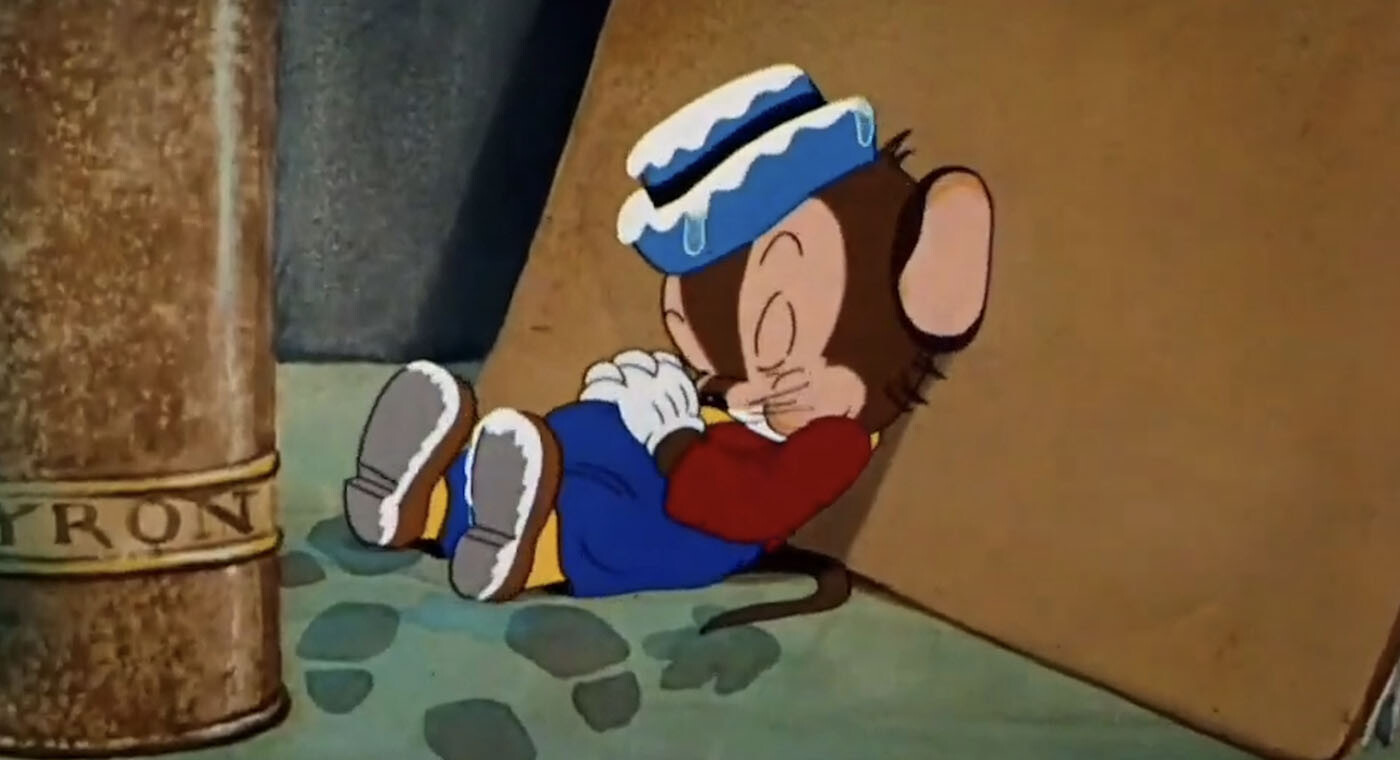
While Sniffles lacks the edgy humor that defines Looney Tunes, the sweet, spunky mouse is a significant character for a few reasons. As Beck explains, “Sniffles was a star character,” headlining in a dozen cartoons between 1939 and 1946. Farago also notes a degree of historical significance: “I don’t think he’s anyone’s favorite character, but Chuck Jones, who created him, really seemed to enjoy Sniffles. It was one of Jones’ earlier characters that he really took ownership of, and it was a time when Chuck Jones was figuring things out, even if he’s more sentimental than most other Looney Tunes.”
Sam Sheepdog and Ralph Wolf

Sam Sheepdog and Ralph Wolf represent Looney Tunes’ greatest “meta” joke. Like so many other cat-and-mouse-type relationships, Sam was a sheepdog who stopped a wolf — Ralph, who looked astoundingly like Wile E. Coyote — from getting his sheep. But what made their seven shorts unique was that their roles were not born out of deep, animal desire — it was simply their job.
Each short would begin with them greeting each other with a “Morning, Ralph,” “Morning, Sam,” before literally punching a time clock and falling into their typical comedy roles. At the short’s conclusion, both clocked out and said, “Good night.” As Thompson notes, “There are even shorts where they have lunch together. Ralph Wolf and Sam Sheepdog are only rivals during business hours.”
“It’s amazing that Looney Tunes hadn’t existed all that long when these characters came into existence in 1951 because it’s very much a commentary on Looney Tunes itself — there’s an incredible self-awareness,” Farago adds.
Miss Prissy

“Miss Prissy is such a charming character,” Bergman says of the tiny, lovesick chicken. Bergen adds, “She was only in a handful of the classic cartoons, but she’s very memorable, and she’s been brought back in modern cartoons. I do a show called Bugs Bunny Builders where she just popped up.”
Petunia Pig

“Petunia Pig was never that well-defined,” laments Bergen, who has played Petunia’s love interest, Porky, for over 30 years. Graves agrees, saying, “In the older shorts, Petunia Pig is just there.” But Petunia, visually, is identifiable, and Beck notes that she has been in a lot of comic books. Although she’s struggled to find a voice since she debuted in 1937, Graves says that the most recent Looney Tunes show gave the character some definition that hopefully continues to evolve: “In Looney Tunes Cartoons, Petunia and Porky have a really fun back-and-forth. She’s well-intended but hapless — she’s a walking time bomb, and she’s very funny.”
Pete Puma

“He’s only in one classic cartoon, but everyone remembers Pete Puma,” says Beck. “There are some cartoons that indelibly stick with people, and Rabbit’s Kin with Pete Puma is one of them.” Alvarez adds, “When I was working on the comics, nobody, except me, knew who Pete Puma was, but after we used him, the feedback for him returning was so good that we used him again and again. He became a regular in the comics because people love him.”
Hippety Hopper

The adorable baby kangaroo with boxing gloves isn’t quite part of the top-tier Looney Tunes roster, but Beck notes that “Hippety Hopper is a star character.” He appeared in 14 shorts with Sylvester, several of which also featured Sylvester’s son.
Barnyard Dawg
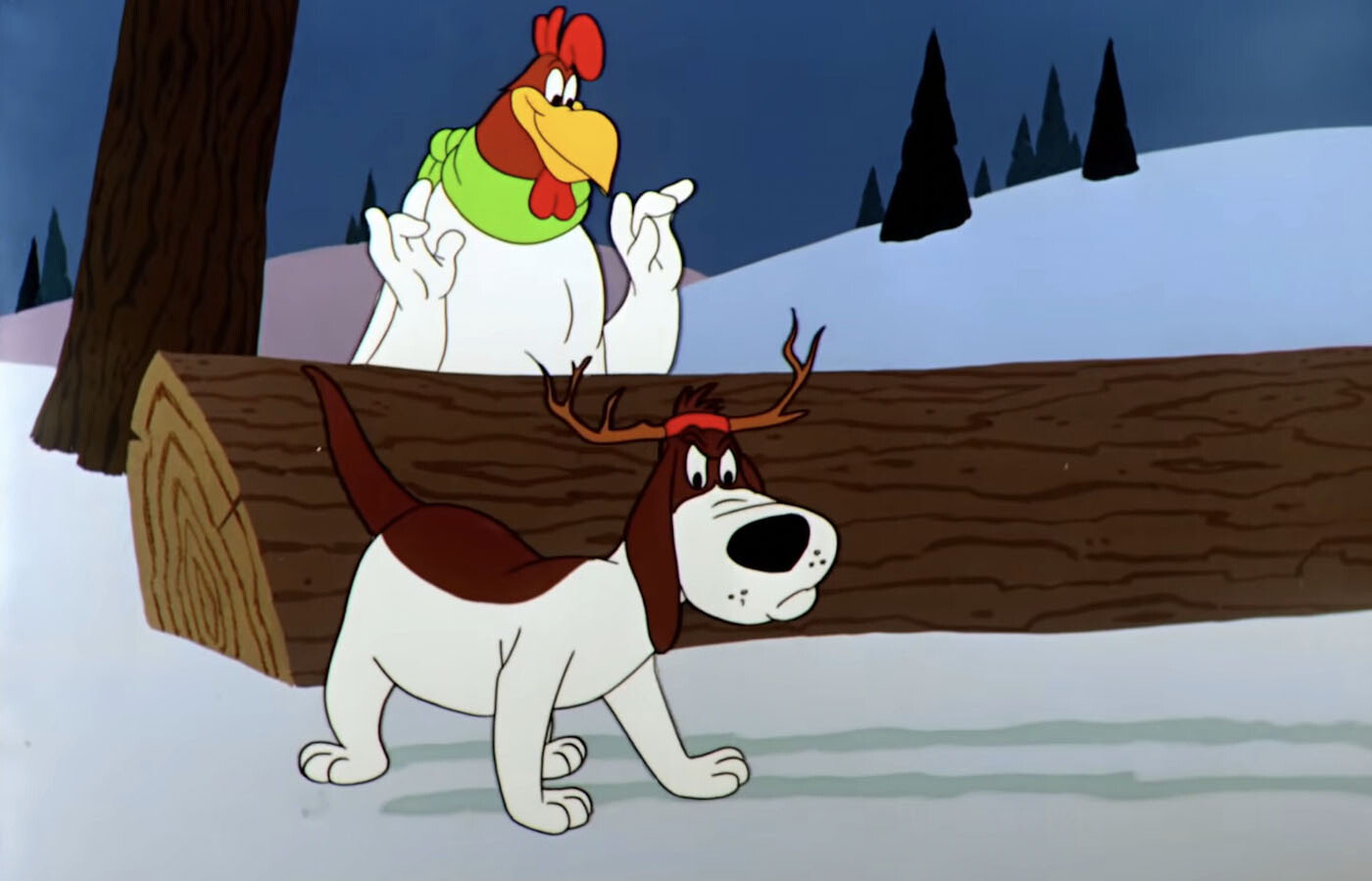
“The Barnyard Dawg is a team player,” says Farago. “He’s there, he does his role and he’s funny.” Never a star character — he barely has a name — the Barnyard Dawg was Foghorn Leghorn’s most significant antagonist, and the Foghorn shorts would be nothing without him.
Melissa Duck/Tina Russo

“Melissa Duck started back in 1950’s The Scarlet Pumpernickel as Daffy’s damsel in distress,” explains Graves. “She’s also in a couple other shorts and the feature film Daffy Duck’s Quackbusters in 1998. She also has a big role in 2002’s Baby Looney Tunes show. However, for 2011’s The Looney Tunes Show, Melissa Duck had a name change to Tina Russo as the creators were unsure if people would remember Melissa. She was also given a tougher, loonier personality.”
Tina Russo was a strong presence on that show, but she hasn’t shown up since. Meanwhile, Melissa Duck has reappeared in Looney Tunes lore via the 2021 game Looney Tunes World of Mayhem. So it’s possible Tina may have been switched back to Melissa, or at some point, they’ll be revealed to be separate characters.
The Gremlin

“In Falling Hare, the Gremlin is fabulous,” says Ruegger of the rare Bugs rival who got the better of the bunny. Following the release of Roald Dahl’s 1943 book The Gremlins, about mischievous creatures sabotaging warplanes, gremlins were everywhere, including at Warner Bros. “The Gremlin was a really fun character and unique and, being from 1943, it was very much to the times,” says Clampett, whose father directed Falling Hare.
Cecil Turtle

Cecil, the turtle from a variety of “tortoise and hare” Bugs Bunny shorts, is sometimes referred to as the villain whom Bugs hates the most because he can never seem to best him. “Cecil, along with the Gremlin, are one of just two characters who are memorable for beating Bugs Bunny,” says Graves. “Not only does he defeat bugs,” Thompson adds, “but he does it so effortlessly that it drives Bugs insane.”
Mac and Tosh/The Goofy Gophers

Featured in a respectable nine classic shorts — as well as a good amount of modern media — Mac and Tosh, the Goofy Gophers, are “a parody of Chip and Dale,” notes Graves. “They exhibited unwavering perseverance in the face of danger, yet their overt politeness often made their escapes from danger hilariously close.”
Bosko

Debuting in 1929, Bosko was the very first star of Looney Tunes, headlining nearly 40 cartoons for Warner Bros. between 1929 and 1933. As Beck explains, “Mickey Mouse was a sensation. Soon, every studio had their own Mickey Mouse-like character, and at Warner Bros., that character was Bosko. Bosko’s cartoons were Depression-era cartoons meant to pep you up, and they were very well made.”
“The reality is that Bosko is an extreme caricature of a Black child,” Beck continues. “Call us ignorant, and maybe we were back then, but truly, people didn’t know what Bosko was until recently when the internet allowed more research to be done on the history of the character. People didn’t even know what Bosko was when they were being shown in theaters.”
In the very first Bosko shorts, Bosko was depicted as having a stereotypical “Black” dialect, but he was soon given a more falsetto, Mickey-like voice, and the earlier shorts were rarely, if ever, replayed, obscuring the history of the character. So, while Bosko is undoubtedly offensive, as the character who kicked off Looney Tunes, he is also historically significant.
Rocky and Mugsy

“Gangster pictures were very popular when these cartoons were made,” Thompson notes, and Rocky and Mugsy were the most memorable of the various gangster villains.
The Dover Boys

“Chuck Jones had an animator named Bobe Cannon who was experimenting with these things called ‘smear drawings,’” explains Thompson. “Smear drawings” were put in where a character or object was moving from one position to another, and instead of just drawing the object in a middle position, the object would smear and become distorted.
“Jones was under pressure from studio head Leon Schlesinger to make his cartoons more outrageous and, out of spite, Jones decided to dedicate an entire short to Cannon’s unique style,” Thompson continues. “The result was The Dover Boys at Pimento University, a cartoon about three college kids. While Jones never did another cartoon like it, The Dover Boys at Pimento University was a hit, and its unique style of animation became very influential. For example, the way the characters move in the Hotel Transylvania films is inspired directly from The Dover Boys.”
Charlie Dog

“Originally a pooch under the direction of Bob Clampett, Chuck Jones really brought out the comedic potential with this character after finding him a new home and starring vehicle in his 1949 shorts, Awful Orphan and Often an Orphan, pairing the hapless pup with Porky Pig,” Graves explains. Graves also points to an excerpt from Chuck Jones’ memoir: “I rescued Charlie from the Warner Bros. character pound, where he had been abandoned. Charlie Dog is one of my favorite characters. I don’t understand him, but I do like him. Charlie is merely trying to find a master and a home, which are perfectly natural ambitions for any dog.”
Hector the Bulldog

If you look back at all the Looney Tunes shorts, you’ll find a lot of tough bulldog characters under a variety of names. Chester’s buddy Spike and Pussyfoot’s protector Marc Anthony were defined well enough on their own, but the rest were not. That is, until 1995 when the showrunner for The Sylvester & Tweety Mysteries decided to make them all the same bulldog. For this list, Thompson contacted The Sylvester & Tweety Mysteries producer and showrunner Tom Minton, who explained, “We named that character Hector. In The Sylvester & Tweety Mysteries, he serves as an amalgam of several Looney Tunes aggressive canines.”
The Three Bears
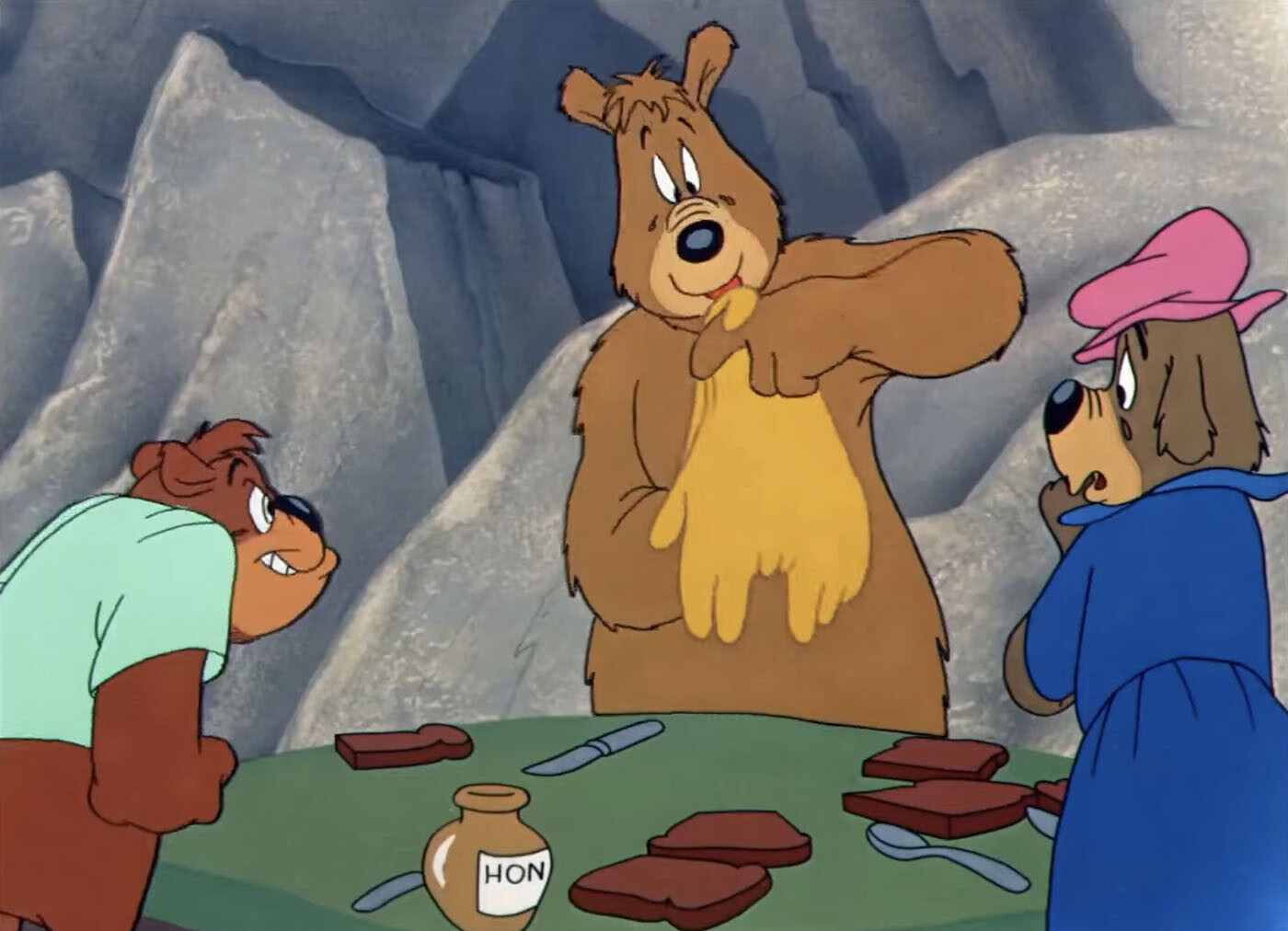
“The Three Bears are great,” says Beck. “Those cartoons are hilarious.” Other fairy tale staples in Looney Tunes usually shifted in personality to service other characters, but the Three Bears were very much their own thing. Papa Bear was an obnoxious jerk, Mama Bear was his long-suffering wife and the overgrown Junior Bear was a complete idiot. “The family dynamic of the Three Bears is so wrong and painful and awkward, and it makes them irresistible. It’s an early example of cringe comedy,” says Farago.
Sylvester Junior

“Sylvester Junior was in a lot of cartoons, and he was a great character,” explains McKimson. Sylvester Junior looked up to his dad but would also be hilariously embarrassed by him when he failed. While he represents a later, sometimes frustrating cartoon trend of introducing a miniaturized copy of the original as a sidekick — take Scrappy-Doo, for example — Sylvester Junior hit when the idea was still fresh and funny.
Beaky Buzzard

“Beaky Buzzard is a phenomenal Looney Tunes character that threatens the life of Bugs Bunny upon every appearance with his agility and cunning — only after disarming him with his slow demeanor,” says Graves. “Beaky’s voice actor, Kent Rogers, brought that character to life in Bugs Gets the Boid and The Bashful Buzzard, but when Rogers tragically passed away during a Naval aviation training accident, Bob Clampett decided to retire the character.”
He was revived in 1950 for a couple more shorts by Bob McKimson, but that was all for his classic appearances. Nonetheless, Beaky is still one of Looney Tunes’ most recognizable third-tier characters.
Henery Hawk

Created by Chuck Jones, the diminutive chicken hawk who tangled with Foghorn Leghorn was meant to be the main character, but as Beck explains, “Foghorn Leghorn stole the show from Henery Hawk. The very first cartoon with Foghorn, Henery was the star, but Foghorn took over the series. Still, there are other Henery cartoons out there, some even without Foghorn, and he was also used a lot in the comic books. Despite being overshadowed by Foghorn, Henery is still memorable and made an impact. As Bergen says, “A character like that — who’s teeny weenie, yet who has that kind of an ego and bitterness — you’ve got to love those kinds of underdogs.”
Lola Bunny

Some Looney Tunes purists might shudder at Lola’s high placement (or her inclusion at all), but Bergman says that “Lola has been in the zeitgeist long enough that she’s earned a place here.” Lola was created because they wanted a prominent female toon in Space Jam, and as Farago explains, “For so many people out there, Space Jam is their jam. It was their introduction into Looney Tunes.”
Lola was initially just a romantic foil for Bugs but has developed more as a character over time. As Bergen notes, “The best thing they ever did with her was in 2011’s The Looney Tunes Show, when Kristin Wiig played her. In that, she wasn’t just Bugs Bunny’s love interest; she had a great personality. She was kind of flighty, like a bubbly version of Phoebe on Friends.”
For his part, Graves adds, “The more appearances Lola has, the better she gets and the more popular she becomes. The Looney Tunes Show was a shot in the arm for that character; she’s also in the new Tiny Toons, and people are enjoying her characterization.”
Gossamer

“Gossamer is another character that just sticks in your head,” says Ruegger, citing the scene in Hair-Raising Hare where Bugs gives the giant orange/red monster a manicure and says, “My, I bet you monsters lead such interesting lives.” Beck agrees, adding, “Gossamer’s major. They sold a lot of Gossamer merchandise at those Warner Bros. stores.” The ferocious, sneaker-wearing beast also appeared in many modern Looney Tunes shows and movies, and although people may not know the name — which he didn’t get until the 1980s by the Warner Bros. marketing department — they certainly immediately recognize him.
Witch Hazel

“Witch Hazel is major,” Beck says of Bugs’ cackling witch nemesis. Farago agrees, saying, “One of the rare female characters, Witch Hazel is so fun, and June Foray was obviously enjoying voicing the character. She was introduced in 1954 by Chuck Jones, and with a lot of experience at this point, Jones really nailed this character right out of the gate.”
Michigan J. Frog

“One Froggy Evening is an iconic cartoon,” says Beck of Michigan J. Frog’s only classic Looney Tunes short. Bergen agrees, saying, “I love Michigan J. Frog as a high-ranking character, not just because he became the mascot for The WB, but because Michigan J. Frog is a great character. One Froggy Evening shows the genius of Chuck Jones — the timing of it, the irony of it. Michigan J. Frog doesn’t talk, and he was only in the one cartoon, but One Froggy Evening shows that a character didn’t need a voice to be brilliant.”
The Do-Do

“The Do-Do was only in one early black and white cartoon, Porky in Wackyland, which was only my father’s fifth or sixth cartoon,” says Clampett. “My father was really interested in surreal things and Dalí, and that’s what inspired Porky in Wackyland. Even though the Do-Do was only in the one cartoon, he ended up in Who Framed Roger Rabbit and Tiny Toons as well. Porky in Wackyland was a real game-changer, and so was the Do-Do.”
Granny
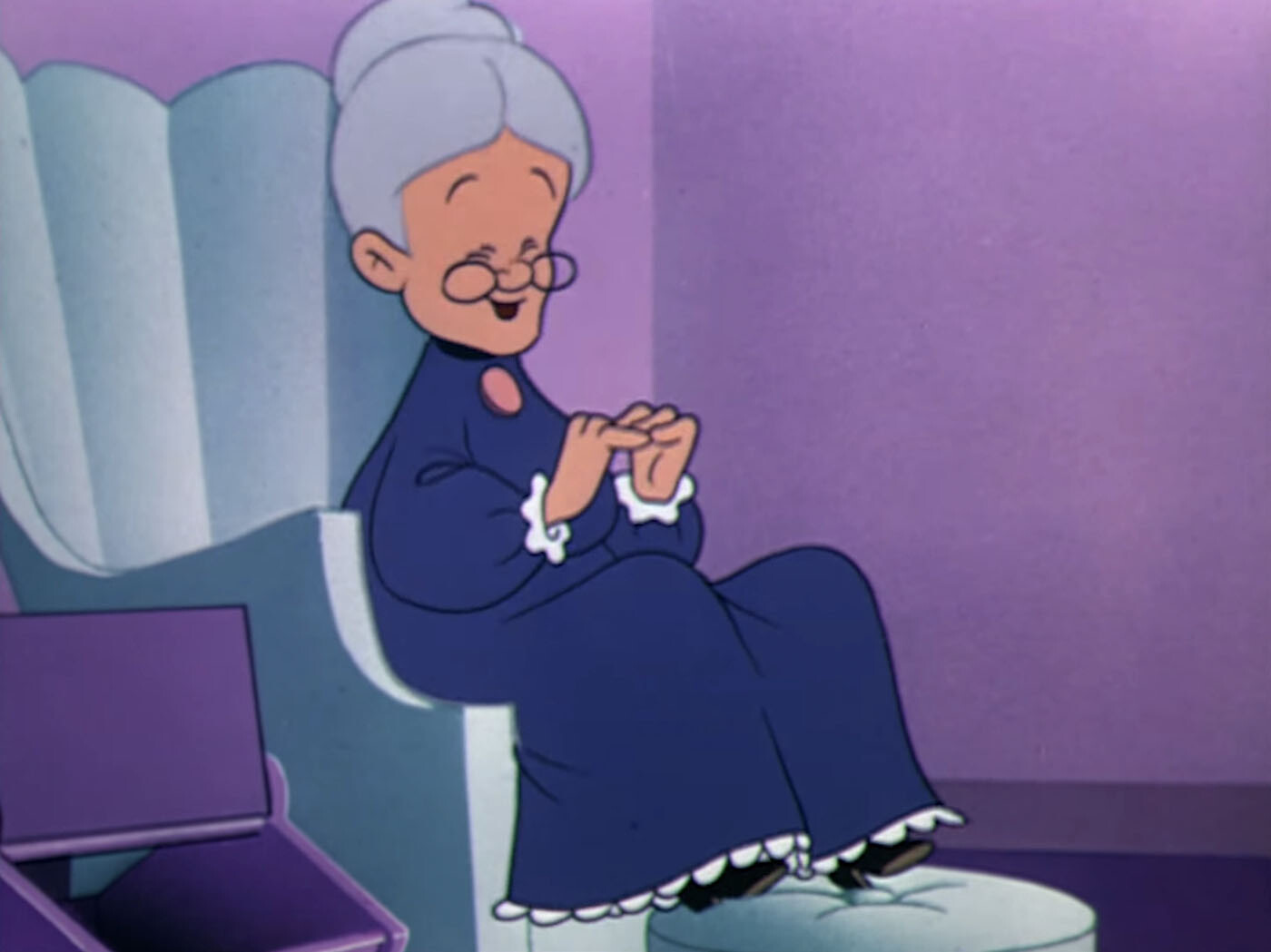
“Granny is very significant,” says Ruegger of Looney Tunes’ most prominent classic female character. The spunky senior citizen starred in dozens of classic shorts and has been used even more in the modern age in shows like The Sylvester & Tweety Mysteries. As Graves says, “The caretaker of Tweety and now the dean of ACME Looniversity in the new Tiny Toons series; Granny ain’t no sweet little old lady — she’s an icon.”
Marvin the Martian

“Marvin the Martian is one of those characters that, right out of the gate, made such an impact,” says Farago. He appeared in only five classic shorts, but Clampett notes that Marvin became a top-selling character for merchandise in the 1990s. “Marvin the Martian wasn’t in that many cartoons, but the visual look of him and his attitude was very appealing in the 1990s,” she explains.
Marvin also had a memorable role in Space Jam and was the main antagonist in the 2003 Duck Dodgers series, amongst dozens of other modern appearances. Not bad for a character who didn’t even have a name for decades. As Bergen notes, “In the scripts, he was called ‘Antwerp,’ but they never said his name. It wasn’t until the 1980s when Warner merchandising decided to give him a name.”
Pepé Le Pew

In March 2021, it was reported that Pepé Le Pew, a prominent Looney Tunes character since 1945, wouldn’t appear in the upcoming Space Jam sequel. The amorous French skunk who aggressively pursues the opposite sex was deemed too problematic to deal with. Predictably, some were outraged by the decision, while others acknowledged the datedness of the character. By placing him so high on this list — in the unlucky number 13 spot — we aren’t caving to the outraged Pepé fans but simply acknowledging that, until very recently, he was one of the most prominent characters in the Looney Tunes arsenal.
Beck did want to offer a bit of a defense for the skunk, saying, “My take is that, with Pepé Le Pew, everyone is reading it backward. You’re supposed to laugh at him because he’s an idiot; you’re not admiring him. He’s wrong, we know that, and that’s why we’re laughing at him.”
Regardless, Pepé’s traditional depiction is no longer going to fly. That said, some recent moves by Warner Bros. marketing — like him appearing in social media posts — might signal that they’re considering a return for the skunk. If so, he’ll undoubtedly undergo an update like many of his fellow characters have over the years.
Elmer Fudd

Bergman says, “I’ve played Elmer Fudd a lot, and sometimes he’s dopey, and sometimes he’s a bit angry, but I don’t think they’d always played him sweet enough in recent years. That sweetness, to me, is where Arthur Q. Bryan — who voiced Elmer in the classic shorts — was really getting the comedy. When Elmer was sweet and pleading, begging Bugs to let him get the better of him, that’s when Elmer was at his best. He’s so pathetic! Yosemite Sam’s anger is real, but Elmer’s anger is a front. It’s an illusion. It’s not who he really is — there’s more dimension to Elmer than people give him credit for. He’s very sweet and vulnerable, and that’s where the comedy comes from.”
Yosemite Sam
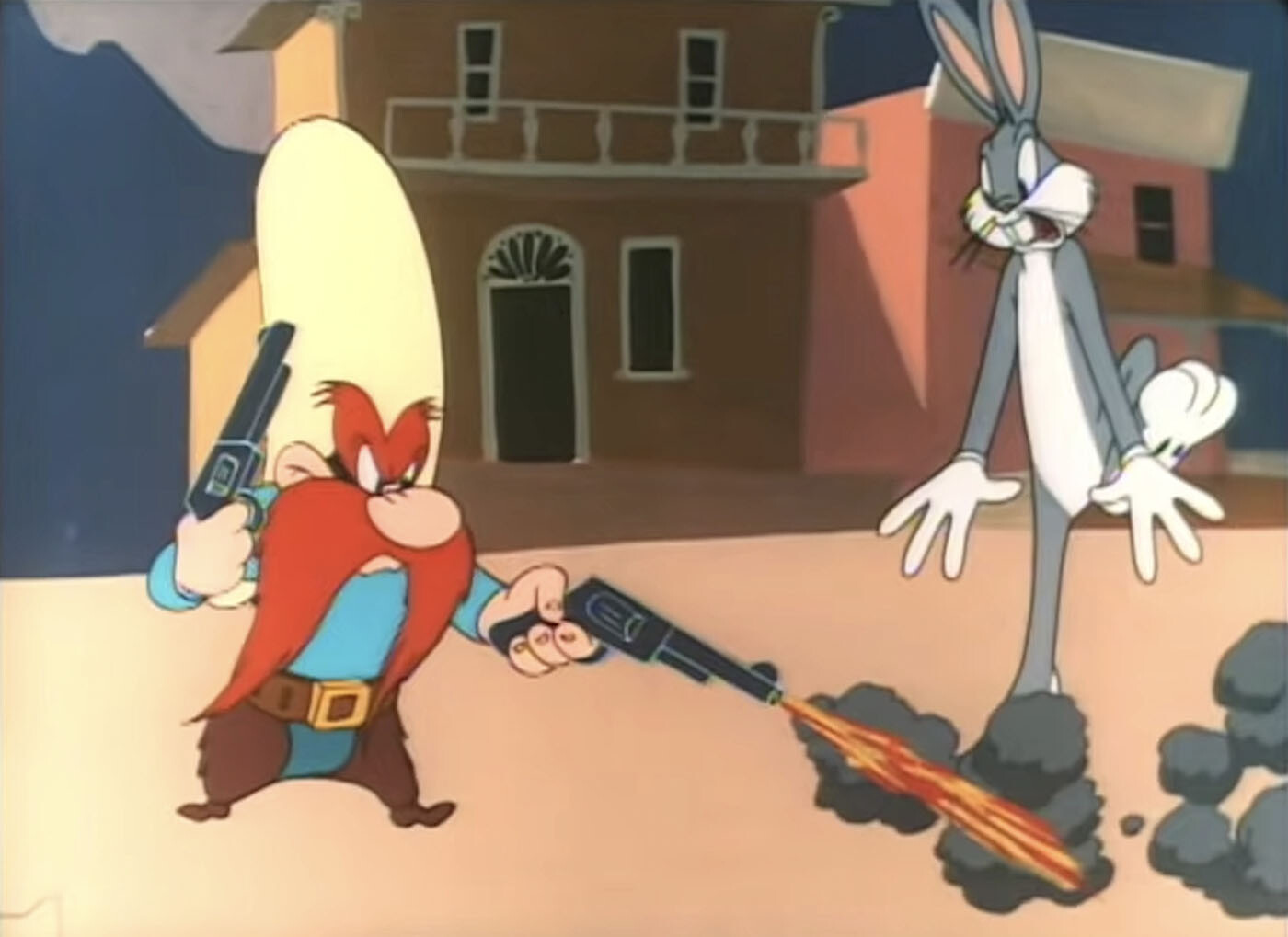
Yosemite Sam is the highest-ranking Bugs Bunny villain because he’s the funniest. As Bergman explains, “I think because director Friz Freleng created Yosemite Sam himself, he put a lot of gags into the cartoons for him.” Having played both Elmer Fudd and Yosemite Sam, Bergman says, “I would agree that Sam is Bugs’ best villain because he’s been given the best material. I also think he’s great due to Friz Freleng — in creating that character, Friz understood that Bugs had to be paired with a formidable idiot. Sam was easily duped by Bugs, but he would never stop trying to get ahead of Bugs. He never gave up — even when he was shot in the head.”
Speedy Gonzales

“My father created Speedy as a one-off, and he only used him in one cartoon,” says McKimson. “Then director Friz Freleng began using him, and he was in tons of cartoons.”
Speedy Gonzales is another character with a rocky history. While immensely popular during the classic shorts, even winning an Oscar, some in recent decades have felt that he was an offensive stereotype. However, due to widespread love for the super-fast Mexican mouse — especially among Mexican Americans — the character has remained in the limelight, now with some renewed awareness about not delving into stereotypes. In a positive step forward, he’s also now being voiced by actual Latino actors in some media.
Foghorn Leghorn

“The Warner Bros. characters were blustery and none more so than Foghorn Leghorn,” says Bergman, who has embodied the character many times. “That bluster made for instant comedy. There wasn’t any character like him in cartoons back then, and he still stands the test of time, not only because he’s in so many cartoons, but because Foghorn is a know-it-all loudmouth, and we all know somebody like that.”
“I also think that characters who have a darker side to them fare better over time because other kinds of comedy can become corny, but Foghorn’s aggressive personality has kept him funny. He’s also got so many great lines and turns of phrase. I’ve memorized so many of them over the years, but one that comes to mind is: ‘I say, nice girl, but she reminds me of the highway between Dallas and Fort Worth — no curves.’ I could hear that line all day long and never get tired of it.”
Road Runner

“Road Runner and Wile E. Coyote are so beloved,” says Bergman. With his stunning design, unforgettable “Beep beep” and lightning speed, the Road Runner is undoubtedly a top 10 Looney Tunes character. Graves adds, “Wile E. Coyote and the Road Runner are the epitome of the cartoon chase, and with an arsenal supplied by the ACME Corporation, a match made in comedy heaven.”
Wile E. Coyote

“Wile E. Coyote outranks the Road Runner simply because he has more of a personality to latch onto,” says Graves. He’s also getting his own movie, Coyote vs. ACME, scheduled for later this year. Of course, the duo will always be best remembered for the classic desert-set shorts by Chuck Jones, which Graves explains have particular international appeal given that the characters never speak.
Taz
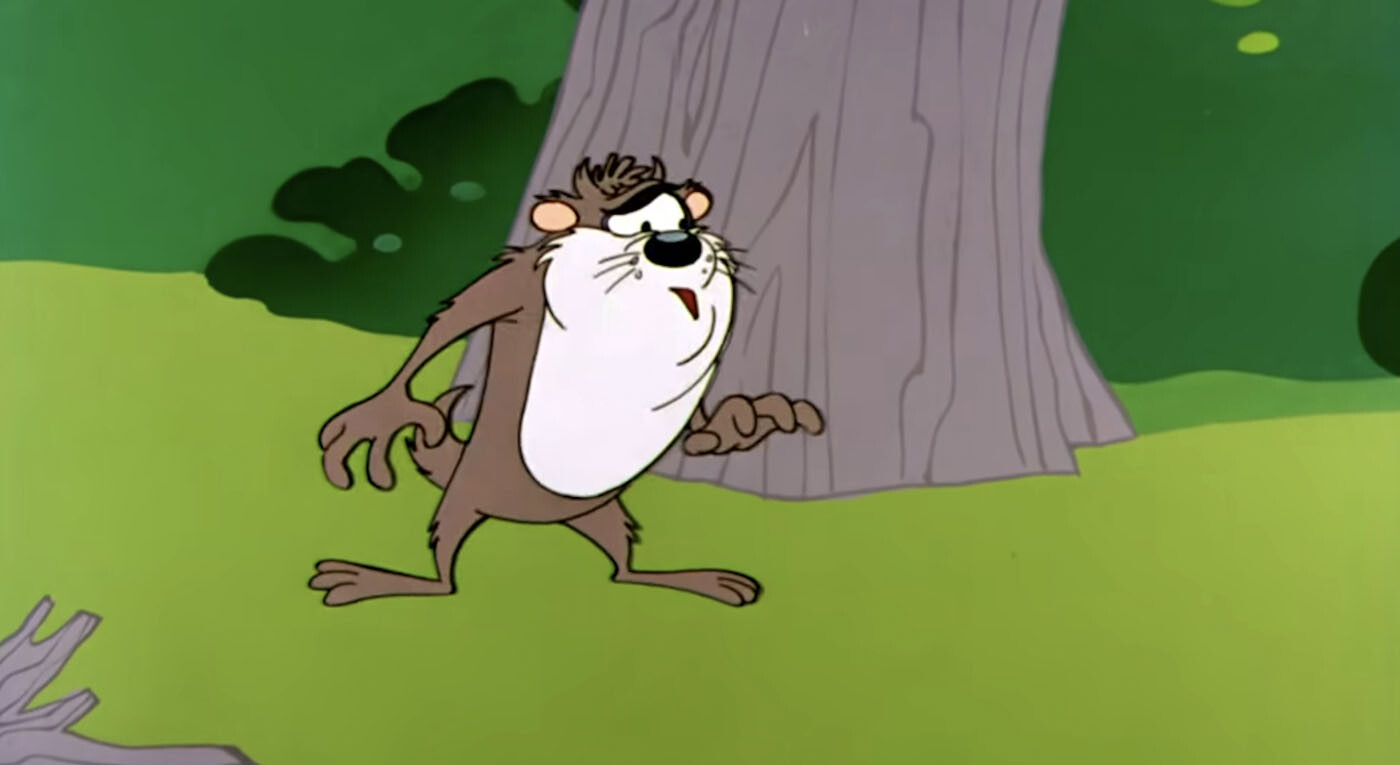
“Taz was only in four cartoons,” says Clampett, “but when I was working with the Warner Bros. stores, I was amazed by how popular Taz was. Everyone wanted him on their shirts and hats and everything.” The most unhinged Looney Tunes character was a fun, minor character back in the day but became nearly as popular as Bugs during the 1990s — even getting his own Saturday morning cartoon. His prominence has waned a bit since then, but he’s still a core member of the gang.
McKimson adds a bit of history behind the character, saying, “Taz was the last major character created, and my father was looking for something different than mice and ducks and cats and things like that. My dad suggested to his unit, including my uncle Chuck McKimson, ‘How about a Tasmanian devil?’ Nobody had ever heard of one, but everyone drew up what they thought it would look like, and they all came up with somewhat similar results. My dad then took all that and incorporated it into the Tasmanian Devil we all know.”
Tweety

Similar to Taz’s surge in the 1990s, Tweety rode a similar wave back in the 1980s and 1990s. He was on countless bits of merchandise and enjoyed spin-offs like The Sylvester & Tweety Mysteries. Still, Bergen, who has voiced Tweety countless times, misses the little canary’s earlier depiction. “Speaking as a fan, I think they’ve lost some of what makes Tweety great. He was a bit of an a-hole back in the 1940s. With both Bob Clampett, who created Tweety, and Friz Freleng, who used him a lot after that, Tweety had this ‘Ain’t I a stinker’ personality that was so funny. When you see Tweety in Who Framed Roger Rabbit, peeling Eddie Valiant’s fingers from a flagpole so he falls to his doom, that was going back to Clampett’s Tweety, who was a lot funnier and more interesting.”
Ruegger agrees: “I love what Bob Clampett did with Tweety. Those three or four cartoons are among my very favorite cartoons on Earth. What a demented little monster he was.”
But even though Tweety has been watered down in recent decades, he’s still a tremendously popular character, with Bergen noting that there may be some hope of the “stinker” Tweety return, saying, “The recent Max cartoons gave him some of his edge back.”
Sylvester

Of the core Looney Tunes cast, Sylvester is the most versatile player. As Bergman says, “My favorite character of all time has to be Sylvester because, unlike any other major character, he lives in two universes. He’s a pet to Porky, but he’s also an antagonist to Tweety and Speedy while also being a father to Sylvester Jr. Those paths never crossed, but he occupied two distinct worlds.” He’s also in more Oscar-winning cartoons than any other player, starring in three of the five shorts that won an Academy Award.
Porky Pig
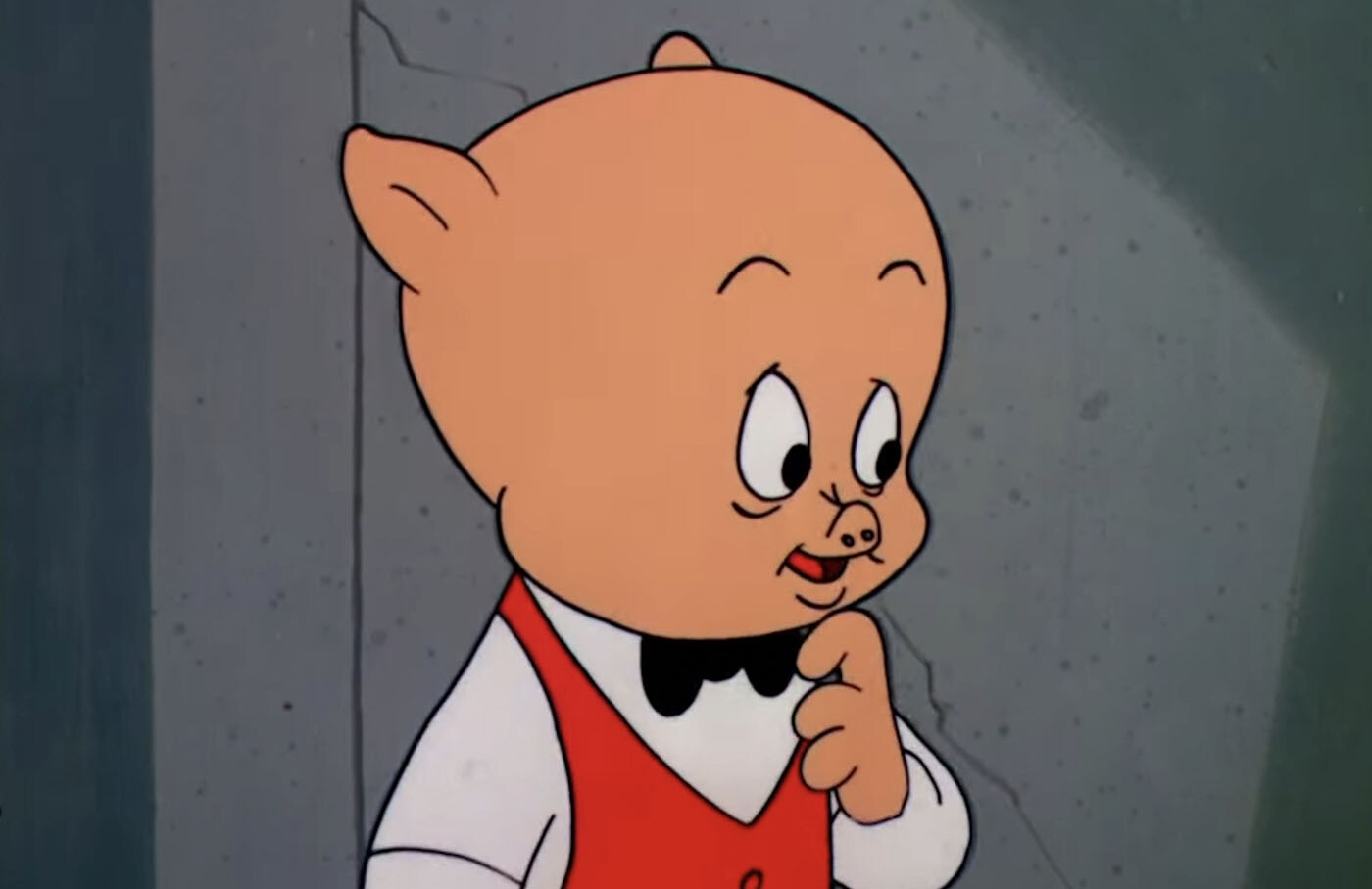
“Of course, Bugs and Daffy have to be the top two, but for me, Porky is number one,” says Bergen, who has been doing Porky Pig since 1990. “Friz Freleng created Porky Pig in 1935 for a short called I Haven’t Got a Hat, which was a Looney Tunes parody of the Our Gang (Little Rascals) comedies. They were trying to do a series of little animated animal kids, and the Porky character took off. He became the first big star cartoon character Warner Bros. ever had.”
Indeed, Porky’s debut marked when Warner Bros. stopped ripping off Mickey Mouse and found its own voice. He’s historically important, but unlike forgotten characters like Bosko, Buddy and Beans, Porky has stuck around for nearly a century. Alongside characters like Daffy and Sylvester, Porky is used for maximum comedic effect, but he’s also funny on his own. “What I love about Porky is the comedy,” Bergen says. “When Mel Blanc took over for Joe Dougherty in 1937, he did these wonderful ad-libs as he was stuttering, and they were very funny and so memorable.”
Additionally, the usage of Porky doing “That’s All Folks” — which is so iconic it was even used to close the Disney film Who Framed Roger Rabbit — has kept him a headliner, even if Daffy and Bugs have somewhat overshadowed him.
Daffy Duck

“Daffy is such a wild and fun character,” says Clampett, whose father co-created Daffy with Tex Avery. The second-biggest star of Looney Tunes has gone through changes over time. Early on, under Clampett and Avery, he was an out-of-control anarchist who loved to shout “Woo-hoo” and rile people up, especially Porky Pig and Elmer Fudd. Later on, he became embittered and sarcastic under the development of Chuck Jones. Irresistibly funny in both incarnations, Daffy had dozens upon dozens of cartoons become instant classics because of his antics. “Daffy Duck often has the funniest cartoons, even more so than Bugs Bunny,” says Farago.
There is no question that Daffy is the second-biggest Looney Tunes character, which, as Farago notes, has a certain poetry to it as well: “Having Daffy as number two, just behind Bugs, is perfect because Daffy would be so upset by it.”
Bugs Bunny

When this all-star team of experts was assembled, nobody questioned that Bugs Bunny — the most popular Looney Tunes character since his creation in 1940 until today — would be at the top of this list. All agreed that no other character could possibly compete. “Bugs is absolutely the number one character,” says McKimson. “My father worked for Tex Avery when Bugs was being developed, and he credited Tex Avery with the personality of Bugs and himself with Bugs’ design. My father said Bugs did things people wished they could do, and that’s what made him popular and why he’s still popular. It’s all about Bugs’ attitude — my father loved Bugs’ attitude, and so does everyone else all around the world.”
That’s all, folks!